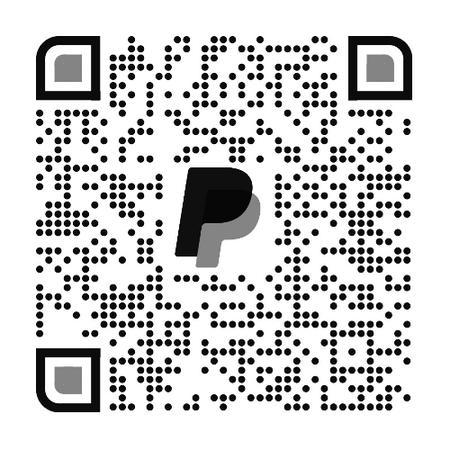




REVOLUTIONIZING WOMEN'S HEALTH: GROUNDBREAKING TECHNOLOGIES PAVE THE WAY FOR A BRIGHTER FUTURE
BREAKING BARRIERS: REVOLUTIONIZING WOMEN'S HEALTH THROUGH FUNDING AND FEMALE-LED ENTREPRENEURSHIP
AGEISM IN TECHNOLOGY CAREERS? MY EXPERIENCE
AI-EMPOWERED HUMANS: HOW AI CAN HELP US BE MORE BALANCED, WELL-ROUNDED HUMANS IF WE WANT IT TO
EMPOWERING WOMEN THROUGH CODING
COMBAT MEDICAL GASLIGHTING: A PERSONAL MISSION WITH MYUTI


TAKING RISKS: STARTING A TECH COMPANY IN YOUR 40S, WHEN YOU DON’T HAVE A TECH BACKGROUND
BOOK REVIEW: UNMASKING AI: MY MISSION TO PROTECT WHAT IS HUMAN IN A WORLD OF MACHINES BY DR JOY BUOLAMWINI
WHY MORE WOMEN IN TECH COULD LITERALLY SAVE LIVES: A TECH EXEC'S VIEWPOINT
"FAILURE IS FAMILIAR, SO WHY DO WE
IT?"


AMPLIFYING WOMEN’S VOICES: THE POWER OF SEO AND BACKLINKS IN ZIVA VOICES



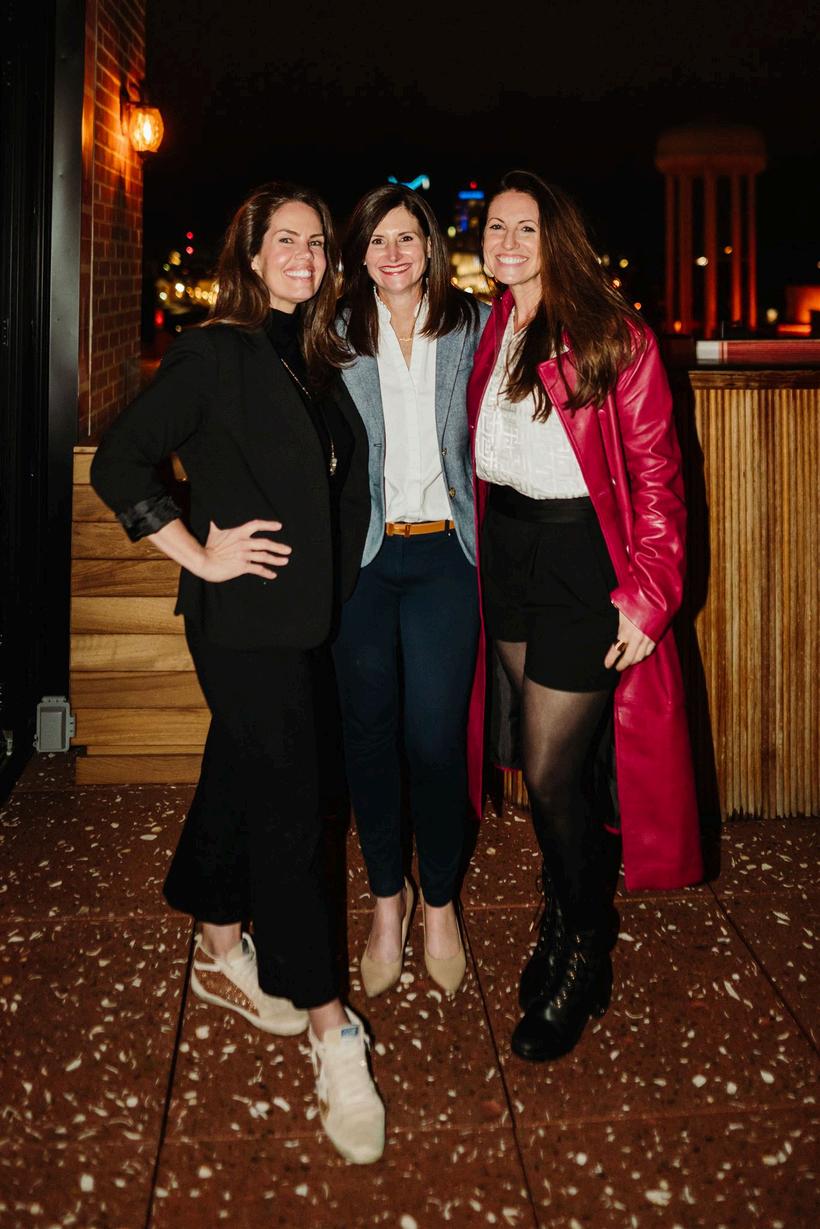
BRIDGING GAPS AND AMPLIFYING VOICES: MY MISSION TO FOSTER DIVERSITY IN ADOPTION AND FOSTER CARE
EMPOWERING DREAMS: A TECH JOURNEY UNVEILED
ADVANCING WOMEN IN TECH CAREERS
PODCAST RECOMMENDATIONS
PART 2: HONORING WOMEN’S HISTORY MONTH IN LEXINGTON, KENTUCKY
INTRODUCING THE ZIVA VOICES “WOMEN SUPPORTING WOMEN” AWARD
DRIVING CHANGE TOGETHER
ZIVA VOICES “WOMEN SUPPORTING WOMEN”AWARD WINNER: LILLIE RUSCHELL
THIS YEARS EVENT WOMEN’S INTERNATIONAL DAY SPEAKERS
ADINA TATUM
LAMAR ZALA GRAN
KATHRYN C KAUFMAN
PART 3: LEARN MORE ABOUT ZIVA VOICES
THE 4 PILLARS OF ZIVA VOICESHERSTORY IN THE MAKING
MISSION AND VISION
OUR GOALS AND WHAT WE OFFER
PART 4: INSIGHT INTO THE ZIVA WAY SYSTEM
ZIVA
BY DR. KINGA MNICH & ELLA LUCAS-AVERETT

Dear Readers,
Welcome to the Q1 2024 issue of Ziva Voices Bookazine!
In this edition, we're diving deep into the world of women in tech a realm where the voices of female trailblazers are resonating louder than ever. From groundbreaking startups to established industry leaders, women are at the forefront of shaping the future of technology in remarkable ways.
Our mission at Ziva Voices has always been to amplify the stories of women how they shape their communities, their economies, and the world at large. This issue is no exception. We are proud to present a collection of personal stories, compelling data, and thought-provoking discussions centered around the theme of Women in Tech.
In this issue, you'll encounter stories from female founders who are disrupting industries and breaking barriers with their innovative ideas.
We'll explore the critical importance of diversity and inclusion in STEM fields, and how it directly impacts innovation and progress. From health tech to biotech, engineering to entrepreneurship, we've curated a diverse range of topics that highlight the contributions of women in the tech sphere.

We delve into the challenges and triumphs of navigating the tech landscape as a woman, tackling subjects such as imposter syndrome, ageism in tech, and the significance of taking risks. We also examine the broader implications of why we need more women in tech, not just for the advancement of technology itself, but for the betterment of society as a whole.
As you explore this issue, we invite you to reflect on the incredible achievements of women in tech, and to continue to champion diversity, inclusion, and support in the tech industry, ensuring that opportunities grow more accessible to women across the globe.
We simply don’t have enough women in the tech space, and every woman who is forging the way deserves our support and encouragement. These are the women that will create the change for us.
This issue is in honor of the inspiring women who are shaping the future of technology, one innovation at a time.
KingaMnich DR KINGAMNICH


By Gloria Kolb
A long-awaited revolution is happening in women’s health, led by innovative female entrepreneurs reshaping the landscape of health tech. This new frontier of female-led companies is coming on the heels of years of frustration from women not being heard or seen by the medical and investor community.
From femtech startups to women’s health initiatives, women are stepping forward with resilience, creativity, and determination to pave the way for a healthier future for all.
After I gave birth to twins — that’s 13 pounds of baby! I realized that I had a problem many other women face after giving birth: bladder leakage. Also, like many women, I was embarrassed and frustrated by the problem.
The available solutions to this very common, age-old issue were down right appalling. The only treatment available was vaginal devices that required one to lie down and take 20 minutes out of their day to get treated. With two newborns and a busy schedule, I didn’t have the time or desire for something so invasive.
Often, innovation is born from frustration. With women often being examined too quickly by doctors who aren’t asking the questions, there is often little understanding of the practical aspects of treatments recommended. For example, a mom with toddlers in tow cannot go to weekly pelvic floor physical therapy sessions. There has been a rallying cry in recent years for redefining the healthcare game.
One-third of women experience leakage, often due to giving birth, pelvic-floor trauma, menopause, or chronic UTIs, and yet, options for care were limited. It essentially felt as if the medical community was telling us surgery was the answer and that vaginal devices that take up your time (especially when they were made pink and purple) was what all women wanted.
I introduced Elitone as a way for women to regain their confidence and have another, more tech-informed, less invasive option for urinary incontinence care. The device is engineered to stimulate the pelvic floor muscles to contract, and the treatment can be done while dressed and active at home, saving women time and frustration.
Of course, I have been told that if Elitone was such a great invention it would have already been done, but inventions like this have also typically been introduced by male engineers, rather than female engineers who understand the encompassing issues those inventions aim to solve. The healthcare industry is currently witnessing a surge of female-led initiatives, products, and services due not only to necessity but to female innovators seeking to put an end to being ignored.
I introduced Elitone as a way for women to regain their confidence and have another, more tech-informed, less invasive option for urinary incontinence care
Breaking barriers in any field is not without its significant challenges. The funding gap for female-led startups remains a formidable obstacle for many, but ventures in the realm of women’s healthcare receive a doublewhammy of funding problems. Not only are their ventures underfunded, but research into women’s health is also underfunded. It’s a herculean feat to overcome for female-led companies seeking to change the healthcare landscape.
Currently, only 2% of venture capital funds go to women-led startups. Even though women have fought hard for a seat at the table, the needle has not moved quickly toward a more equitable landscape. Women’s health has been considered “niche,” or not profitable for investors because they don’t understand the issues women face. After telling 50 male investors in a pitch event that one-third of women have this problem, I later heard that the discussion was around whether bladder leaks for women was ‘even a real problem’ since they had never heard it was an issue!
My company recently completed its Series A funding round, a position we feel fortunate to be in and one that many femaleled ventures never reach. However, this milestone only came after we already had partners, two FDA approvals, and breakeven sales.
Funding more female-led healthcare companies isn’t just a sound investment strategy but a strategic move toward revolutionizing the entire healthcare landscape — especially for women. Female entrepreneurs can bring about transformative change through innovation, insight, and if given the financial resources necessary to bring their ideas to fruition.
Diverse perspectives are going to offer diverse solutions. My experience with the healthcare community proved that diverse solutions were few and far between, especially for issues that only affect women.
Women’s health is a complex domain, and having femaleled perspectives at the helm can lead to a more comprehensive understanding of issues and better solutions.
There are a wealth of unmet needs in women’s health. By shining a spotlight on the need for funding of women-led initiatives in the healthcare space, those needs can be addressed by the people who have firsthand experience with the medical community from a female perspective.
Women’s issues in the healthcare space need awareness and destigmatization. The funneling of funding toward women-led ventures will contribute to spreading awareness and the necessary destigmatization of women’s issues.
Incontinence is not just a women’s issue, but my prediction is that as soon as we produce a treatment for postprostatectomy incontinence, funding will no longer be a problem.
According to a recent report from the World Economic Forum, closing the health gap women face globally could lead to a 1.7% increase in per capita GDP, and concludes that every $1 invested in women’s health potentially unlocks $3 in economic growth.
When putting women-led healthcare needs and funding for women-led ventures under a microscope, one resounding truth emerges: there is transformative power in investing in the female visionaries who are currently reshaping the future of women’s health. The funding of women-led ventures will create a needed seismic shift in the status quo. The journey may be in its infancy, but the destination promises a healthcare landscape that better recognizes female vision and better serves women’s health.

Gloria Kolb is the CoFounder and CEO of Elidah, Inc, maker of ELITONE which is the first non-invasive wearable treatment for millions of women with incontinence. She is a serial entrepreneur and inventor with more than 25 patents, whose designs have led to prestigious awards including Boston’s “40 under 40” and MIT's “World’s Top Innovators under 35”. She has degrees from MIT and Stanford University.
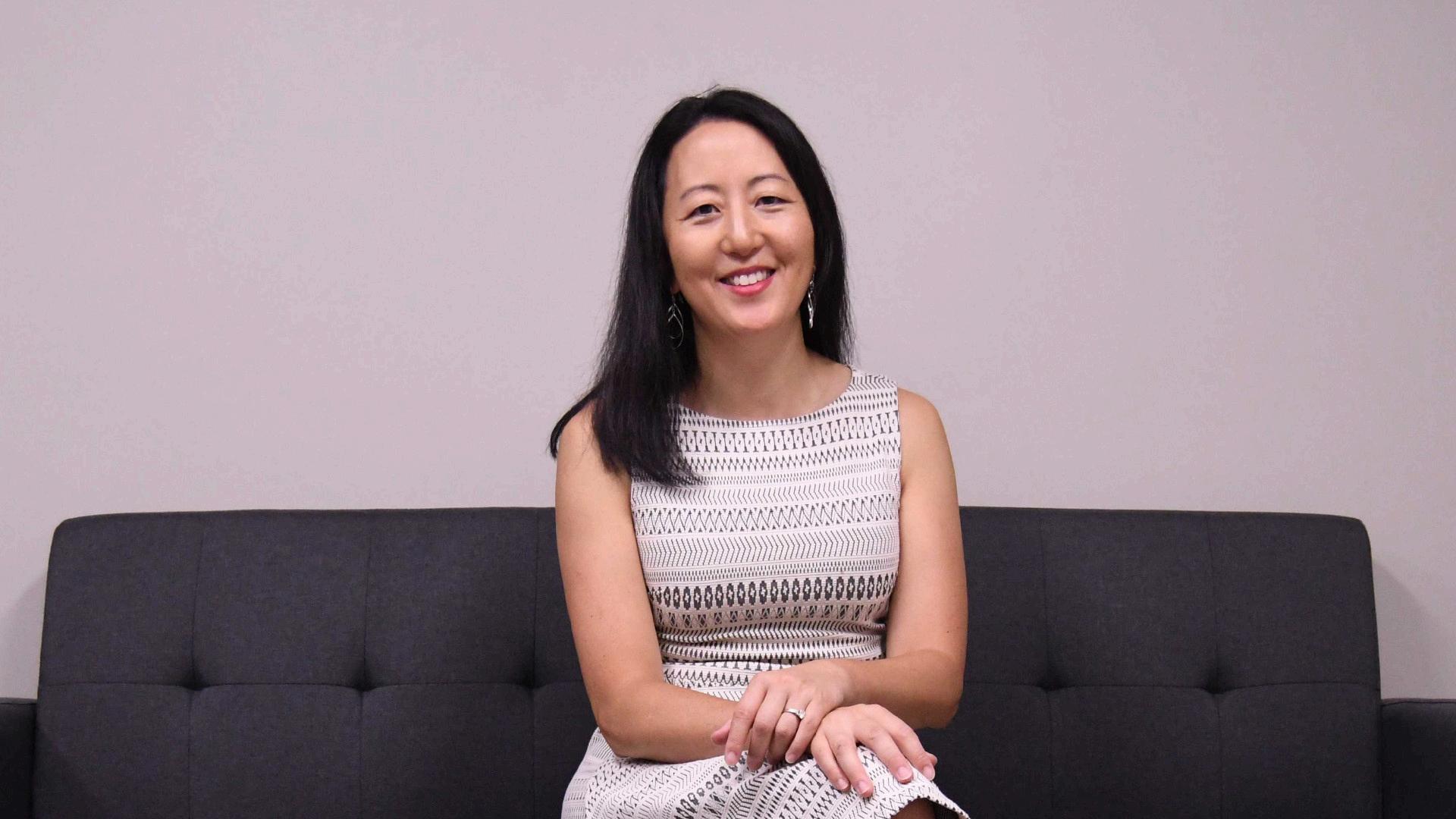
https://elitone.com/about-us/ https://www linkedin.com/in/gloriakolb

by Mimi Jerkan
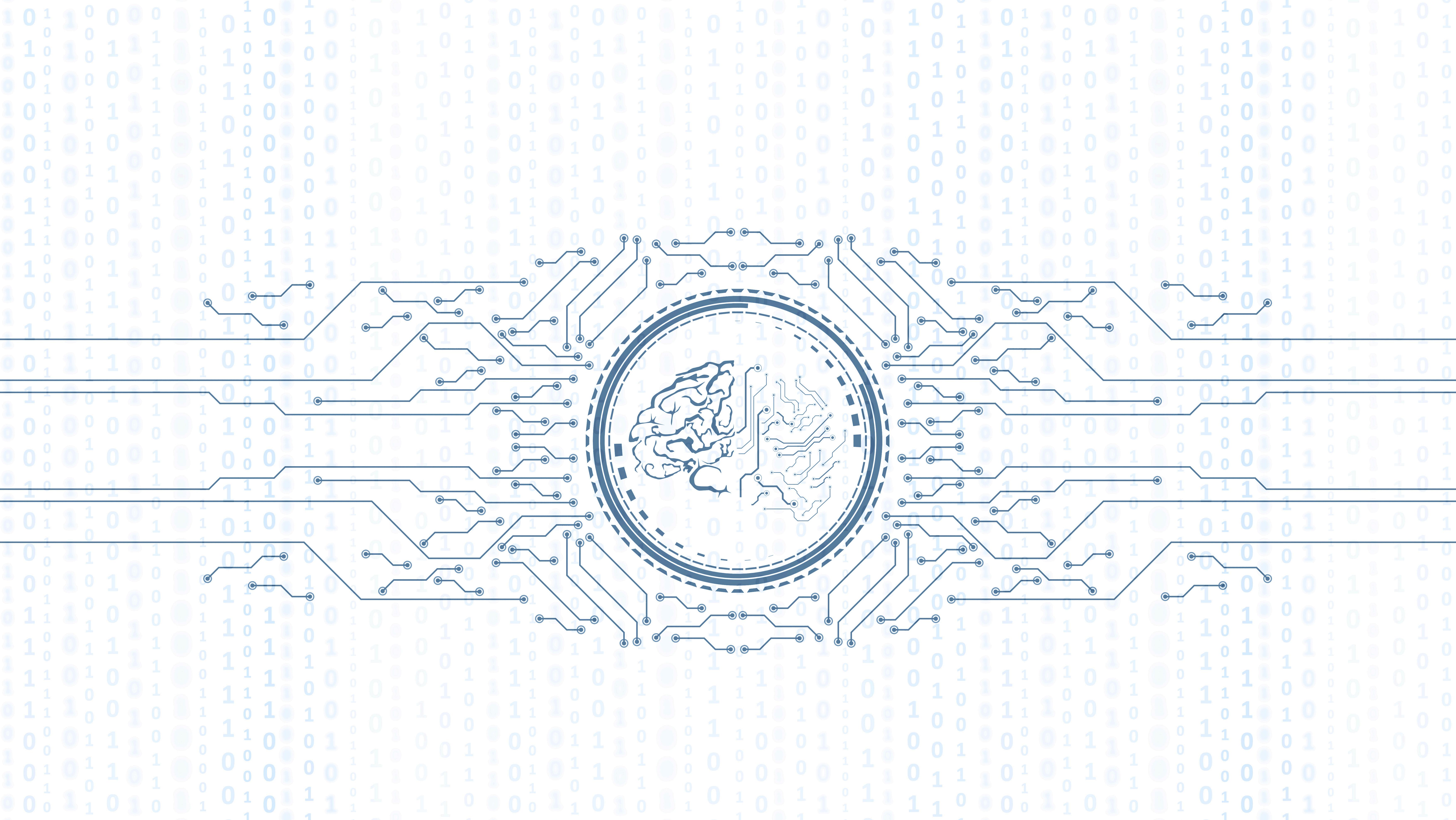
She said, “You never want to be laid off in your 50’s.”
I was 42 years old at the time and I thought, “What an odd statement.” Cheryl, (not her real name), had just joined our team. She was hired by our VP of Services to our newly-formed team, which I managed with one of my closest colleagues and dear friend. Our team was filled with ambitious people who were technologically inclined, process-driven and sales-focused. So, why would age even matter?
Our team handled client case submittals. If there was a case, there was likely a larger problem with our client needs - it was almost always more than just the software. We listened to our Enterprise and SMB clients about various existing or potential issues, scoped out projects and statements of work for software and services. Not only did my comanager and I travel, meet, sell and deliver along with the other team members, we also grew a second team to help our clients who were stretched for resources. We were busy, we were critical for our clients’ success and were exceeding performance expectations.
We brought in an abundance of revenue, blowing out our goal in the first six months, and making nearly two times the revenue expected. The teams remained in place, but members slightly changed as some came and went, and came back again. This was partly due to our company leadership changing four times within the five years of the team inceptions(!).
As business continued, so did the changes. I was laid off in February 2023 (along with 30 others) after 15 years of service. I am truly grateful for all the opportunities provided to me, the people I met, the friendships I made, and the successes I had. And, I wasn’t alone, there were so many others who were laid off from FAANG or FAAMG companies during and after my experience. 2023 was a sh#! show for tech layoffs. But, as I am now in my mid-50’s, I admit that I am questioning both why I was let go, and why - with all of this experience - I am having trouble finding my next role.
I continue to actively, doggedly and consistently search for my next opportunity as I have for the past 12 months.
In the past year, Cheryl’s words have come back to me often. I question whether I’m experiencing the same things she did when she was searching 15 years ago. I’m inclined to think that it’s not that different. Ageism is real.
People I know around my age range and level of experience who were laid off are scratching their heads, thinking “Why - in a period of such a low unemployment rate - is it so very quiet out here?”
After connecting with existing and new networks, speaking with and providing my résumé to recruiters (aka headhunters as we called them back in the day), and applying to well over 200 job postings, why is it so quiet?
I surmise there are some valid reasons. Perhaps the open roles have an abundance of candidates that make it nearly impossible to get through the fodder, or, maybe the applicant tracking systems and algorithms are not picking up on the nuances of experiences that could make a great hire.
It could be the salary requirement question raising a flag because it exceeds the position range. It could be the position posted was placed on ‘Hold’ to build the candidate pipeline until the true green light is given for the budget. It could be there are silent postings or silent hires.
Whatever the reason, it's perplexing. And it’s far more concerning to think that ageism is at play. But, I do know that I am far from retirement, and I am certainly not too old to be hired. So why do I and others hear nothing but tumbleweed blowing in response to our application submittals? (Was that too dramatic? Maybe, but believe me, it’s not that far from what’s happening - it is quiet out here!)
Despite my persistent efforts, I choose not to despair. I’m not giving up because I believe I need to ‘be the change I want to see.’ I’m joining forces with ground roots efforts, and you're invited to join me! You can help shed light on the experience of individuals like me or you, if this resonates with you. Let’s build the data to really know. Take the survey Aging in Tech Workforce. And, please, feel free to share the link with those you know, love and admire.
Cheryl was on to something when she said, “You’ll never want to be laid off in your 50’s.” We can change that narrative by paving the way for a more inclusive and supportive tech community. I didn’t know that I would, until I did.
Mimi has over 15 years of experience in Human Resources (multiple roles) and 13 years of Process
Improvement as a senior HR strategist working with SMB and Enterprise organizations providing guidance to startups, growth, and stabilized organizations.
Mimi has worked with organizations to transform talent management, to bridge organizational gaps, recommend new processes, develop training and communication strategies all while also evaluating innovative tools and solutions
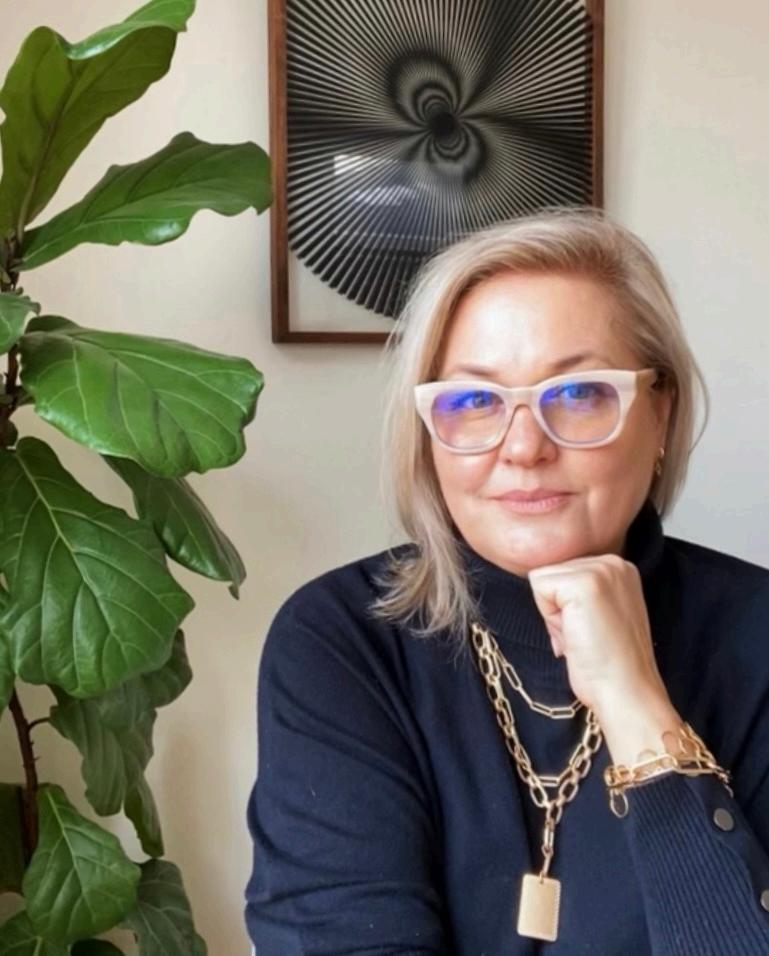
that deliver the apps, analytics, & experiences to empower leadership and HR teams in creatin employee engagement and branding to meet their business goals and objectives in revenue, cost, and risk.
https://www linkedin com/in/mimijerkan/
Women no longer have an 'if I can' mindset. Now it's more about 'how I can'—be in tech, start something in tech, fund something in tech. That shift is exciting! And it happened because we created a network where we show, daily, that women are innovating.”
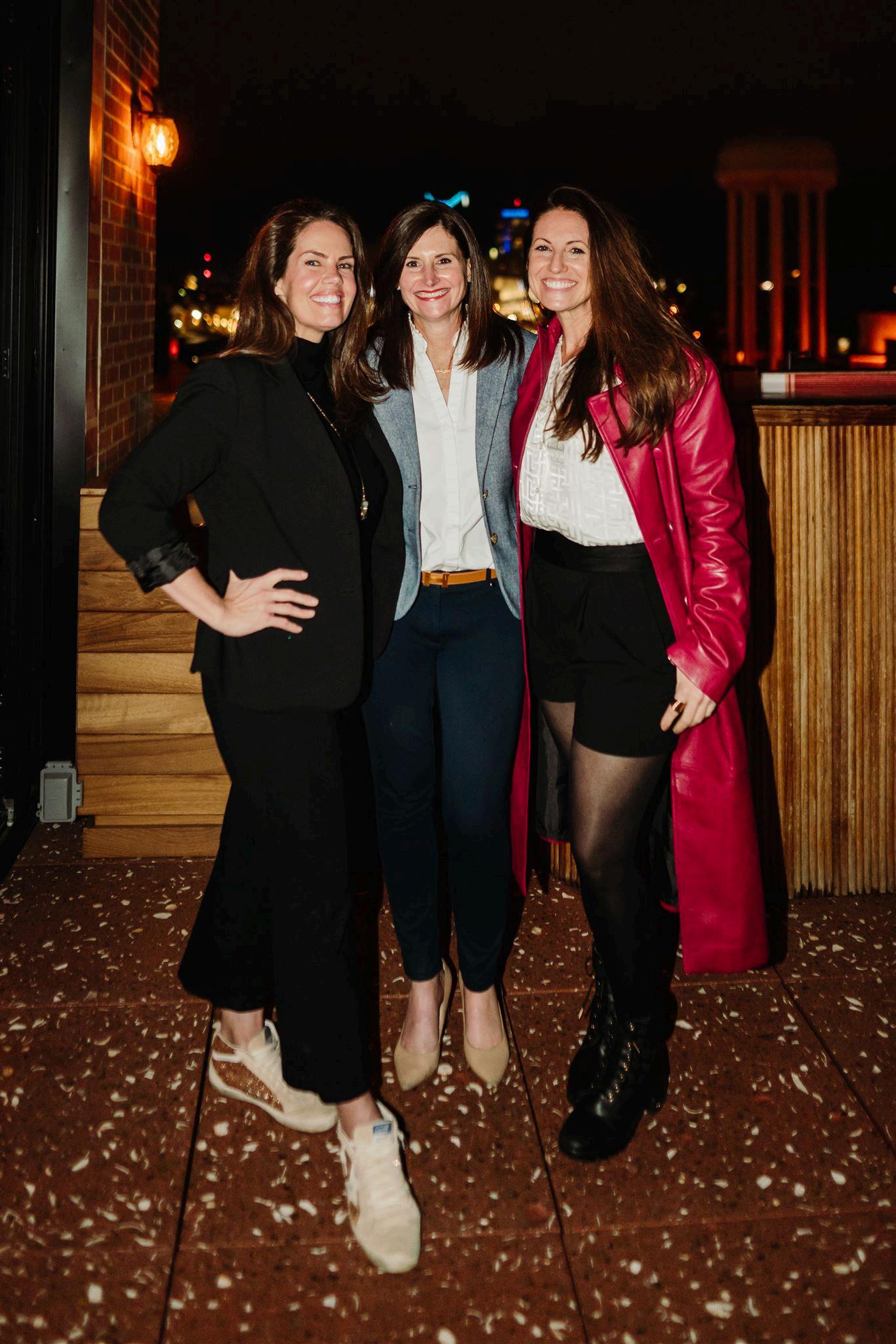
-Shaherose Charania

By Andrea Owen
BY: BRITTANY STRUBE
In an era where technology continually reshapes our lives, AI stands at the forefront, promising a revolution in education and personal development.
Last summer, I sat in Nashville’s Grand Ole Opry Convention Center at the ‘Anthology Together’ conference. The room was unnecessarily cold from the blasting air conditioner, and with the timing being right before lunch, the ‘hanger’ vibes in the room were growing. The biggest moment of the conference was minutes away as we waited, rather impatiently, and my coworkers and fellow instructional designers whispered about the new AI technologies they had learned about in the presentation led by a Microsoft employee moments before. As our hunger and anxiety mounted, a Dolly Parton impersonator took the stage to prepare us for the big moment- the unveiling of Artificial Intelligence capabilities designed to help educators create online courses using adult learning theory best practices. Technology that could do much of my current job responsibilities. Murmurs in the crowd grew.
As I am also a yoga teacher, I’m no stranger to sitting with uncomfortable feelings, but these emotions tested me. Technology has a special way of getting under our skin and deep into our core. Colleagues around me began panicking while I went inward, evaluating my career and self-worth against this new technology. After letting the waves of negative emotions pass, slowly I began to recognize the opportunity ahead of us.
Most people don’t understand exactly what it is that I do professionally.

Instructional design is a process for developing educational and training programs in a consistent and reliable fashion, originated in the United States military during World War II to create effective training materials for large numbers of recruits. Integrating educational technology in instructional design involves using digital tools and resources, such as e-learning platforms, multimedia, and interactive modules, to enhance the learning experience and improve the effectiveness of educational programs.
In April 2018, I was a fourth grade teacher in my first year at Fayette County Public Schools. The Kentucky Legislators were in session; I was aware of this but didn't really focus on it. Teachers began discussing House Bill 151, also known as the "Sewer Bill." This bill, originally about sewers, had an amendment that altered teachers' retirement. HB 151's implications included maintaining the annual cost of living adjustments at 1.5%, requiring new hires to join a hybrid cash balance plan with specific contributions, and limiting the sick days teachers could count towards retirement. Understanding the full impact of the bill wasn't straightforward. For most people, grasping the nuances of a bill is challenging, and the legislative process, which has sped up by 25% over the past 25 years according to a League of Women Voters report, adds to the complexity.
What teachers, including myself, needed was a simplification of the political jargon that was shaping our future.
More recently, the League of Women Voters released a report outlining the expedited process legislators have used to pass bills without time for public input, or in some cases to read the legislation themselves. Knowing the report was important information that I wanted to consume in order to be a better and more educated citizen, I sat down and began to read, but I found myself reading the same sentence over and over again as my tired brain tried to comprehend the words in front of me. Frustration built and I eventually turned to ChatGPT for help. To get a basic understanding, I asked the tool to explain the report, ‘School House Rockstyle’ and as if I were 12 years old. This initial overview made reading the full report subsequently less frustrating and more insightful. Adult learners often prefer a brief summary, like a movie trailer, before diving into the details. It helps the brain to digest complex information when it is scaffolded like this. This type of usage is one of the capabilities of AI.
Educator is one of the careers that is most impacted by complex legislation. Being informed as to what is going on in the halls of the state Capital is important, but it’s unrealistic, until now. The reality is that educators in this country are experiencing burn out at alarming rates, at unsustainable rates. They’re being asked to do more with less. Expecting educators to be data scientists, life coaches, pedagogy experts and community resource centers is a hard task for a career that makes an average of $41,000 a year in Kentucky, according to ZipRecruiter. As a teacher, I sacrificed my time, body, and mental health spending hours, weekends, and summers thinking about students, crafting emails to parents, and generating individualized lesson plans so my students could meet their goalsbecause it was all worth it to watch a student’s face light up when they meet a goal.
While AI can facilitate personalized learning experiences, it cannot replace the human touch that is essential in education. With information available the role of educators will evolve to facilitate holistic human development- critical thinking, empathy, connection, and application of knowledge. Learning is an inherently social process, through play and exploration we can understand new concepts and ideas.
Recently on an episode of Dr. Andrew Huberman’s podcast, he discussed dopamine rewards as it relates to the learning process. Most of us get information on social media now; we’re drowning in information, but starved for knowledge. This is attributed to the brain receiving constant and quick dopamine hits from social media content, akin to consuming fast food for the brain. In contrast, when the brain earns dopamine as a reward for strenuous effort, such as acquiring a college degree, the satisfaction is more nourishing.
However large class sizes, strenuous regulations, standards and expectations make it nearly impossible for educators to obtain their highest potential. Recently I spoke with educators on how they can utilize AI in their day-to-day life. One exclaimed “this will save me 30 to 45 minutes coming up with a scenario that we’ll spend 5 minutes on in class.”
So many teachers are operating in survival mode. What if we could use AI for good? To streamline our processes, reduce cognitive load, and be able to show up as better humans.
ChatGPT 4 now supports uploading articles, reports, and links, providing summaries that facilitate the learning process. Tools like SciSpace can be used to process scholarly articles, PDFs, and summarize texts. By receiving a bit of information before a flood of details, our brains can adapt to new knowledge more quickly. And search engines like Perplexity will be a necessary tool for research.
Educators standing at the forefront of learning and innovation, possess a unique and powerful agency in shaping how AI integrates into the educational landscape. Far from being mere spectators, teachers can guide, influence, and mold the application of AI in ways that enhance learning outcomes, foster critical thinking, and nurture creativity among students. Educators can design and leverage AI tools to complement their teaching methods, creating personalized learning experiences that meet the diverse needs of learners. This proactive approach empowers educators to not only adapt to the changes brought about by AI but to actively influence an educational future where technology and human insight coalesce to unlock unprecedented potential in learning
Engaging with AI: Practical Tips & Use Cases
Have a conversation with it. Go back and forth multiple times to get the best output.
Include the phrase “Do not hallucinate. Ask me anything you need to complete this” at the end of your input. (In AI, hallucinate means “make facts up” to answer the question)
Explore Future Careers: Use AI to help students explore potential future careers by leveraging AI tools that provide insights into various industries and professions
Generate Stories: Integrate AIgenerated stories to create immersive and interactive learning experiences for students. AI can be used to develop narratives that resonate with specific educational objectives, fostering engagement and understanding.
Language Translators: Integrate AI language translation tools to facilitate multilingual learning and communication in the classroom, allowing students to engage with content in their preferred language
Develop Higher-Level Thinking Skills: Encourage the use of AI tools with students to develop higher-level thinking skills and promote academic integrity. For example, AI writers can be used as researchers to compile text for review, and educators can teach students how to ask AI questions effectively
Engage in Socratic Debates: Foster critical thinking by having students engage in Socratic debates with AI as a way of thinking through complex questions and topics, encouraging them to evaluate and articulate their own perspectives
Brittany Strube is an educator, advocate, and yoga teacher. She is rooted in the philosophy that education can transform lives, communities, and institutions. Her career has spanned from elementary school teacher to the education technology sector where she largely focuses on human-centered AI implementation in the learning process. Brittany spends time volunteering with the League of Women Voters, a nonpartisan nonprofit dedicated to educating voters, traveling, and learning new things.

https://www linkedin com/in/brittany-strube/
The
future of education and AI is unknown, but we have the choice and the power to decide how these tools are used.

"The
more we encourage girls to pursue their interest in STEM, the more we are creating opportunities for them to be leaders, innovators, and decision-makers in our society."
For decades, coding has been considered an art primarily associated with men. However, in recent years, many organizations have started addressing the issue of women's underrepresentation in the tech industry. We are now witnessing a slow but steady decrease in this underrepresentation as women are taking up leadership positions in tech and more young women are showing interest in software engineering and programming.
by Ntswaki Motaung and Nyari Samushonga
One particular organisation that has been in the forefront of this topic is WeThinkCode. WeThinkCode is a leading software development academy focused on training underserved youth in tech skills that will see them acquiring a certification in software engineering. Their zero-tuition model eliminates financial barriers and encourages aspiring technologists, including women, to pursue their passion for coding.
WeThinkCode is a leading software development academy focused on training underserved youth in tech skills that will see them acquiring a certification in software engineering. Their zero-tuition model eliminates financial barriers and encourages aspiring technologists, including women, to pursue their passion for coding.
Based in South Africa, WeThinkCode has 3 main campuses in Johannesburg, Durban, and Cape Town. The institution has begun a TVET pilot programme to expand its reach to more young people in townships. The aim is to give them access to digital skills that might otherwise be unavailable to them and also seeks to encourage women to code and create a more inclusive community.
WeThinkCode, established in 2015, has always advocated for gender inclusivity. Their 16-month training program has produced over 1000 graduates, and the number of women graduating has increased year on year. By collaborating with public and private partners to identify and train exceptional African digital talent, students are afforded the opportunity to work with some of the top tech companies in the industry, thereby creating a significant economic impact in their lives.
“Our theory of change is centred on the belief that if we recruit for aptitude using micro-credentials we can tap into a more inclusive pool of talent to train and give fair access to quality education and sustainable jobs. Lowering the barrier to entry by disregarding traditional means of recruitment means we can access a diverse cohort representative of the population economically and demographically,” says Nyari Samushonga, WeThinkCode founder.
At its core, WeThinkCode understands that diversity is not just a buzzword, but a cornerstone of innovation and progress in the tech sector. By embracing diverse perspectives, experiences, and ideas, the organization is fostering a vibrant tech ecosystem where women play a pivotal role in driving positive change. As we celebrate the achievements of women in tech, let us not just count the number of female students walking through the door but acknowledge the profound impact that representation has on shaping the aspirations of future generations of female leaders in technology.


There are several compelling reasons that women should consider entering the software development world, each of which underscores the importance of their participation in this rapidly evolving industry:
Economic Empowerment: Software development offers lucrative career opportunities with high earning potential. By entering the field, women can access wellpaying jobs that provide financial independence and stability, ultimately closing the gender wage gap and contributing to their economic empowerment.
Innovation and Creativity: Software development is a dynamic and creative field that thrives on innovation. Women bring unique perspectives, problem-solving approaches, and creative insights to the table, enriching the industry and driving technological advancements forward.
Career Growth and Advancement: The demand for skilled software developers continues to grow rapidly, creating abundant opportunities for career growth and advancement. Women who enter the field can pursue diverse career paths, from software engineering and web development to data science and cybersecurity, with ample opportunities for skill development and upward mobility.
Representation and Diversity: By entering the field, women can help diversify the workforce, challenge stereotypes, and pave the way for future generations of female technologists. Their presence not only fosters a more inclusive and equitable work environment but also leads to better decision-making and innovation.
Empowerment and Agency: By mastering coding skills and participating in software development projects, women gain a sense of empowerment and agency over technology. They can build and create solutions that address their own needs and interests, whether it's developing apps, launching startups, or contributing to opensource projects that promote social good.


Nyari Samushonga is the CEO of WeThinkCode, a South African tech academy that operates in Johannesburg, Durban and Cape Town. As an Entrepreneur and Tech Executive, Nyari is passionate about seeing Africa take its place as a maker of cuttingedge technology. In her role as CEO of WeThinkCode she has driven effective initiatives to scale the impact of the organisation with an emphasis on building an inclusive tech sector.
https://www wethinkcode.co za/
https://www linkedin.com/in/nyari-samushonga-6965523/
We hope to encourage more women to consider entering the software development field, because it empowers women to shape the future of technology. By actively participating in software development, women can contribute their talents, skills, and perspectives to an industry that is shaping the world we live in today and tomorrow.
SUCCESS IS NOT FINAL, FAILURE IS NOT FATAL, IT'S THE COURAGE TO CONTINUE THAT COUNTS.

Kiran Mazumdar-Shaw, founder of Biocon.

by Lindsey Williams
I have a challenge for you. Sit among a group of women and ask a simple question: "Have you ever felt dismissed by a doctor?" The result will reveal a stark truth about our healthcare systems: many hands will likely be raised. There is a troubling reality of medical gaslighting and the dismissal of women's symptoms. It's a systemic issue that all too often minimizes women's physical ailments like sexual dysfunction or painful menstruation as mere ‘figments of their imagination’ or a result of too much stress.
In contrast, posing a similar question to a room full of men about whether their erectile dysfunction or sudden weight gain has been attributed to psychological factors would probably yield few, if any, raised hands. These disparities have significant repercussions, leading to silent suffering and the normalization of genuine health concerns like bladder leaking as simply "part of being a woman." However, this silence breeds shame and stigma, particularly around topics like menopause, incontinence, and urinary tract infections (UTIs).
UTIs, which affect 150 million people globally each year, disproportionately impact women due to our anatomy. Simply having a vulva is actually the number one risk factor for Urinary Tract Infections. Despite the prevalence of UTIs, testing and treatment methods have remained largely unchanged for decades. Dare I wonder if men had infections at this rate, might we have seen a more rapid progression of innovation?
Antibiotics are often prescribed without precise testing, contributing to global antibiotic resistance and leaving women to endure unresolved infections. Women are expected to accept a “best guess” treatment, despite data showing that this is ineffective up to 50% of the time. Additionally, social stigmas surrounding potential UTI triggers (like sexual activity) further exacerbate feelings of shame associated with seeking care, especially when facing frequent or chronic infections. The propensity to blame women's symptoms on their own actions never ceases.
We’ve had dismissive doctors who eagerly prescribe antibiotics before you can finish your sentence. We have sat in front of student health center nurses who judgingly eye your sexual activity. And we’ve had the frustration of taking off work, waiting hours in urgent care or days to get a GP appointment just to pee in a cup.
We have felt the pain points, including witnessing the struggles of our grandmothers managing UTIs in their advanced years. We intimately understood the gaps in care and recognized the urgent need for change. Thus, MyUTI was born, not just as a business venture, but as our personal mission to bridge the gap in advanced UTI testing and empower women.
As founders of MyUTI, our journey with UTIs began with our own experiences accessing care.

At the core of our mission is the empowerment of women to advocate for their healthcare without shame. Leveraging technology and digital health advancements, MyUTI provides access to advanced testing outside the confines of traditional healthcare models, equipping women with the knowledge to make informed decisions about their health. In a world where access to diagnostics is often restricted behind specialist visits, we champion empowerment through access.
Embracing telemedicine and online platforms, MyUTI liberates itself from the constraints of traditional healthcare, offering women convenient UTI testing. No longer do women have to take time off work or arrange childcare to visit the doctor's office just to provide a urine sample! Access to information catalyzes empowered healthcare decisions, serving as a vital tool for women to advocate for themselves.

Megan Henken Co-Founder of MyUTI
Our message remains unwavering: advocate for your care, raise your voice, and take control of your health. Through our collective efforts, we aim not only to revolutionize the UTI landscape but also to demand the medical respect that women's health conditions warrant. Together, let us break the silence, dismantle the stigma, and pave the way toward a healthier, more empowered future for all women.
Lindsey Williams is the co-founder and CEO of MyUTI, and is an accomplished commercial leader specializing in bringing new products, technology and innovation to market. She has commercialized and led emerging product teams, developed successful corporate and GTM strategies for urology and infectious disease focused diagnostics. She has worked with multiple companies in the molecular diagnostics market within urology and women's health as an executive consultant.

https://www myuti com
https://www linkedin com/in/lindseyawilliams/
http://instagram.com/ myuti

By Heather Nickerson
On
my 40th birthday
a dear friend gave me a birthday card that included the quote, “Wellbehaved women seldom make history.” Those who know me know that I am a risk taker at heart; they also know my risks are calculated.
Now, I don’t think she thought I’d see that card and think, “Oh, time’s-a-ticking, better leave my stable, well-paid executive job and go launch a tech startup.” Nope, highly doubt that thought ever crossed her mind, especially since I was still referring to hashtags as “pound signs” back then. And in fairness, it didn’t initially cross my mind, not in the it’s-all-consuming-can't-think-ofanything-else kind of way.
But it did inspire me to question just what am I doing? Why am I doing it? Do I love it? Truly love it? Do I want my daughter to reflect on my life and say, “Yep, my mom was a senior executive,” or do I want my daughter to say, “Yep, my mom took a risk and created something no one else was doing at the time.” The latter, most definitely the latter.

That thought kept nagging at me in the months that followed. Compounded by a global pandemic (and home-schooling, working, and trying to keep my family safe and healthy, it soon consumed my thoughts. It was no longer something I could easily push-aside as “something I’ll do when I get older.”
Like Having a Baby, There’s No “Perfect Moment”
Nope, no denying it. No more making up excuses, or claiming I needed more time to do more market research. (Who was I kidding? Certainly not myself as I had been doing the market research for my idea years before I received that card.) No more telling myself I couldn’t do it because I didn’t have a technology background. No more trying to find the perfect moment.
Really, is there ever a perfect moment to launch a startup? A perfect moment to pack up your old life, your old career and bid it adieu on nothing more than a big idea and the hope- the belief - that what you are about to do will change people’s lives for the better? No, there isn’t.
There may never be a perfect moment, and all the while you’ll be waiting and waiting for something that may never come. If you want to make a change (in your life, in your career, etc.) make the change.
My second lesson? Taking the risk wasn’t as scary as I thought it would be. Admittedly, I had done the planning, I had established a solid savings base to allow me to do so within my comfort zone, and I had a wildly supportive spouse. Not that it wasn’t momentarily terrifying to tell my friends and co-workers that I was moving on, because it was. But it also wasn’t the end of the world. In my head I had made it seem much scarier than it was.
Which is my first lesson learned in all of this. Do not tell yourself you must wait for the perfect moment to make a change or take a risk.
For someone that is a risk taker at heart this may seem surprising, but I think we all have those moments of self-doubt that can linger. For some, the bigger the risk, the bigger the self-doubt. And that’s okay, it’s a part of what makes us human. Our ancestors needed a little bit of riskaversion every now and then to ensure they wouldn’t make an irreparable mistake.
For me, one of the scariest components of what I was about to do was that my startup was going to be a tech company, but I didn’t have a tech background. Not even close. I was the one our IT team dreaded getting on the phone. Most calls to IT ended with, “It’s okay Ms. Nickerson, we’ll be right there, don’t touch anything else.” That was me, problem child numero uno when it came to all things tech.
My solution to the I-want-to-build-a-techcompany-but-I-don't-know-tech was to reach out to my dear friend and former colleague and ask her if she wanted to join me on the great adventure we now call Artifcts. Thankfully for me, she said yes. And thankfully for me, she is the ying to my yang. She gets the tech piece, and product piece, and all the other pieces that I have had to learn, but only marginally understand.
Aside from the tech piece, there is no way I could have built what we have built as a singleton.
Artifcts without my co-founder would be a fraction of what it is today.
I think it’s easy to underestimate just how much work launching a startup is. To clear up any misunderstandings, it’s a LOT. Take your current job and multiply it by 10 and you are probably in the right ballpark. Having a co-founder has been a life saver and has made it possible to continue expanding and doing more, always more. Having a partner that you know and trust can be the difference between startup failure and success.
How’s it going for us? You could argue the verdict is still out. We are two and a half years young, which in startup culture is pretty young. That said, we’ve gotten some amazing traction, we’ve patented our technology platform, and we’re revenue generating. I expect we’re here for the long haul.
Which brings me to my third lesson—for those of you considering a startup or any new venture: strongly consider bringing in a co-founder as early as possible.
That said, I have no doubt that at some point down the road, I’ll be faced with another inflection point, another risk. I hope my future self will pause (but only for a moment) to assess the situation, and then proceed with caution, ideally with a partner by my side.


“Well-behaved women seldom make history.”Mae West
Heather Nickerson is the co-founder and CEO of Artifcts. She is an avid hiker, skier, baker, storyteller, and collector of memories. Prior to cofounding Artifcts Heather served as President of a private security company and authored a book on how to protect your privacy. She also served for nearly a decade as an intelligence analyst with the Central Intelligence Agency, including serving as a briefer in a war zone tour in Afghanistan. https://www linkedin com/in/heather-nickerson/ https://artifcts.com/

by Dr. Joy Buolamwini
In the evolving landscape of artificial intelligence, where breakthroughs and innovations frequently make headlines, it is critical that we examine the biases that often lurk beneath the surface. Dr. Joy Buolamwini, a trailblazing researcher and founder of the Algorithmic Justice League, shares her profound journey and groundbreaking discoveries in her compelling book, "Unmasking AI: My Mission to Protect What Is Human in a World of Machines."
This book details the “what” and “why” of bias in AI, and effectively communicates the urgent need to confront our blind trust in machines that increasingly influence our lives. "Unmasking AI" is a must-read for those advocating for a world where technology serves all of humanity ethically.
Computers are not impartial entities; they reflect the aspirations and limitations of their creators.
"Unmasking AI" takes us beyond the sensationalized headlines surrounding the existential threats posed by Big Tech. It unveils the concept of the "coded gaze," a term coined by Buolamwini, representing the evidence of encoded discrimination and exclusion within tech products. With a unique intersectional lens, she explores how racism, sexism, colorism, and ableism can intersect, rendering broad segments of humanity "excoded" and vulnerable in a world rapidly adopting AI tools.
Buolamwini emphasizes that computers are not impartial entities; they reflect the aspirations and limitations of their creators. Her work exposes the potential harm that biased AI systems can inflict on marginalized communities, urging us to recognize the responsibility that comes with creating these technologies.
Central to the book is Buolamwini's founding of the Algorithmic Justice League, a call to action against the discriminatory impacts of AI. She emphasizes the need for an intersectional approach in both the tech industry and the research sector. Her mission is to ensure that AI serves the interests of all people, challenging the notion that technological advancements should benefit only a privileged few.
"The rising frontier for civil rights will require algorithmic justice. AI should be for the people and by the people, not just the privileged few," writes Buolamwini, extending an invitation to experts and non-experts alike to join the fight for ethical AI.
Buolamwini, known as the Poet of Code, started young. Her narrative begins with her early experiences, tinkering with robotics as a high school student in Memphis, Tennessee. Her journey continued with the development of mobile apps in Zambia as a Fulbright fellow, showcasing an innate passion for computer science, engineering, and art. As a graduate student at MIT, she delved into groundbreaking research at the "Future Factory," exposing the pervasive racial and gender bias embedded in AI services offered by tech giants worldwide. Her work extends beyond the academic realm, as she advises world leaders on preventing AI harms. Buolamwini's accolades, including the Rhodes Scholarship, the inaugural Morals & Machines Prize, and the Technological Innovation Award from the Martin Luther King Jr. Center for Nonviolent Social Change, underscore the significance of her contributions.
The book has received global acclaim, with Nobel Peace Prize winner Maria Ressa praising it as a “revelatory exposé of biases deeply ingrained in facial recognition and other AI systems.”
"Unmasking AI" is a testament to Dr. Joy Buolamwini's relentless pursuit of ethical AI and algorithmic justice. Through her own journey and insightful revelations, she inspires readers to critically examine the societal impacts of AI and actively participate in the quest for a future where technology serves the collective good.
Get the book here.



By Stephanie Groot
Listen up, techies, investors, and anyone who cares about making the world safer.
I'm not here to preach diversity and inclusion for the sake of a feel-good hashtag. I'm here to tell you - straight from my tech-fueled heart - that increasing the number of women in tech could save lives. And I'm not just talking about the inspirational stories of female innovators like Dr. Jess Wade building life-saving drones, or Dr. Joy Buolamwini making AI safer. I'm talking about preventable injuries, accidents, and even deaths that could be avoided if we had more diverse perspectives in designing the tools we use to stay safe.
Think about this. The majority of personal protective equipment (PPE) was designed for the average male body, including firefighter gear construction helmets and those flimsy masks we all wore during the pandemic. These problems occur due to stale data that needs to include women in the workplace. Studies in the construction industry show that up to 77% of women face unnecessary safety hazards because ill-fitting PPE exposes them to chemicals, eye damage, and even falls. This isn't just an inconvenience; it's a recipe for disaster.

Take female soldiers, for example. Studies show that ill-fitting body armor can restrict movement, cause pain, and even leave them vulnerable to injury. Imagine a soldier on the battlefield, her focus split between the enemy and the straps digging into her ribs, her vision obscured by a helmet that slips over her eyes. That's not just an uncomfortable situation; it's a potential death sentence.
And it doesn't stop there. Healthcare workers during the pandemic struggled with masks that didn't seal around their faces, risking exposure to deadly viruses. Construction workers face increased injury rates from poorly designed boots and gloves. The list goes on. Whenever we ignore the needs and realities of half the population, we put lives at risk.
We need women in tech to not only fix broken systems, but also to harness the power of diverse perspectives. Women have different experiences, challenges, and ways of approaching problems. When we bring those voices to the table, we unlock a new level of innovation.
So, what are we waiting for? We need more women in tech labs, design teams, and leadership positions. We need their voices, ideas, and experiences to guide the development of the tools that keep us safe. As we close the gender gap, we will build a future where safety isn't a matter of luck but a matter of design.
Let's make the tech world a mirror of the real world, a diverse tapestry of talent where everyone has a seat at the table. Let's unleash the power of women in tech, not just for the sake of progress, but for the sake of lives improved, lives saved. Because, in the end, that's what innovation is all about: making the world a better, safer place one line of code at a time.
And who knows, you may be the next Dr. Joy Buolamwini, the next Dr. Jess Wade. You may have an idea that will revolutionize safety. So don't be afraid to break down the barriers, raise your voice, and code your way to a future where everyone feels protected. Because the future of safety isn't just in our hands; it's in the hands of the women who are yet to join us.
Imagineaworldwherefemalefirefightersdesigngear thatprotectstheirbodieswithoutcompromisingmobility.
Imaginefemaledoctorscreatingmedicaldevicesthat seamlesslyadapttodifferentbodyshapes.Imaginea futurewheresafetyisn'tjustaprivilegefortheaverage malebutafundamentalrightforeveryone.
Let's ensure they have a seat at the table, a keyboard at their fingertips, and the chance to change the world.

Stephanie Groot is a curious, creative problem solver drawn to complex and ambiguous challenges. From software betas to boardrooms, I'm your enthusiastic ideatior, always giving honest feedback to pave the way for progress.
She ignites potential, helping individuals and teams unleash their best selves. Where I lead, trust and transparency thrive.
https://www linkedin com/in/stephanie-groot
References:
Crump, J. (2023).Female Personal Protective Equipment (PPE) and Increased Injury Rates (https://surehire.com/blog/2023/04/25/female-personal-protective-equipment-ppe-and-increasedinjury-rates/ .
Janson, D J , Clift, B C , & Dhokia, V (2022) PPE fit of healthcare workers during the COVID-19 pandemic. Applied ergonomics, 99, 103610. https://doi.org/10.1016/j.apergo.2021.103610
Coltman, C. E., Brisbine, B. R., Molloy, R. H., & Steele, J. R. (2022). Effect of Torso and Breast Characteristics on the Perceived Fit of Body Armour Systems Among Female Soldiers: Implications for Body Armour Sizing and Design. Frontiers in sports and active living, 4, 821210. https://doi.org/10.3389/fspor.2022.821210
Morrison, Rose (2023) Women often experience different safety hazards than men in construction industry. https://www.ishn.com/articles/113987-women-often-experience-different-safety-hazards-thanmen-in-construction-industry
Sokolowski, S.L., Griffin, L., Wu, Y. et al. Examination of current U.S. female firefighting personal protective equipment (PPE) sizing and fitting process challenges: an opportunity to improve safety. Fash Text 9, 40 (2022) https://doi org/10 1186/s40691-022-00314-8
“You will be delivering the keynote address," she said. I attempted to object, but couldn’t muster the words when I opened my mouth. I was speechless and transfixed, and I felt goosebumps engulf me in their prickly embrace. This was my first public speaking engagement since the onset of COVID-19; I had gotten used to virtual sessions and webinars. I am super comfortable with the safety of my computer, sharing over the internet with audiences several thousand miles away. But this? I felt the news chip away at my confidence, especially since I had gained weight from comfort eating while battling depression and anxiety stemming from so much uncertainty and devastating news around the world, alongside the personal storms that I had to navigate in my corner of the universe. These thoughts were appeared within nano-seconds, and it took me a minute to find my voice. I finally replied, “It would be a pleasure.”
When the day came, the trepidation was merciless and unravelling. It felt like dipping into your favourite bag of chips, only that this time, it was over-salted. As the minutes went by, I thought about how to turn down the engagement and find my way out of the building. I sat in the speaker’s lounge, typing furiously on my phone instead of reviewing my presentation. I was petrified. All of my years of hard work, experience and expertise did not matter; all I saw was me not having anything to say and messing up my speech because I felt unqualified for such a task. I envisioned a stuttering woman, crippled with nervousness. I even had flashes of being booed off the stage. Yes, it was that bad!
If failure is so familiar, why does the fear of it haunt us?
Imposter syndrome is a pattern that causes individuals to doubt their abilities despite external evidence of their competence. It leads high-achieving people to believe that their successes are flukes rather than earned through ability (Psychology Today). Although it is not recognised as a psychological disorder, it is prevalent among highly accomplished and successful individuals.
The feeling of being a fraud and the fear of being exposed happens to the best of us. It is estimated, according to research, that about 70 per cent of women will struggle with imposter syndrome in their lives. This was apparently my moment.
Interestingly, a study also confirmed that men are 18 per cent less likely to experience self-doubt than women. The other male speakers looked at ease, calm, and collected when I looked around. They did not look like they had any sweaty palms or preengagement jitters. I wondered if they could perceive my fear and the severe rumbling in my stomach from the twists, turns, and knots forming on my insides just by the thoughts of the arduous task ahead of me. I felt disqualified and overwhelmed by self-doubt.
But I was not alone. Maya Angelou's words kept me company.
“Each time I write a book, every time I face that yellow pad, the challenge is so great,” Angelou said. “I have written eleven books, but each time I think, ‘Uh oh, they’re going to find out now. I’ve run a game on everybody, and they’re going to find me out.’”
Indeed, I felt like I had run a game on everybody. Why was I even considered to be on this panel in the first place? I was too young to be here; I had just turned twentyfour last spring, and these other people were well-established professionals and known names well into their forties. “I should not be here,” I muttered. I needed this to be perfect.
I couldn’t afford to start on the wrong note, as my presentation would set a precedent for the whole event. I stared down at my dress. I wish I had worn a brighter colour, or maybe a higher heel. I tried to recoup and re-strategise as my coping mechanisms were failing by the second.
“But what is the worst that could happen?” my colleague and older friend said over the phone. I had desperately reached out to him to share my plight and ask for guidance to navigate the situation. I wanted a way out, but he had none of it. Instead, he jarred my memory and reminded me of how hard I had worked for a time like this, the experiences and lessons serving as preparation to bolster me to overcome such challenges. He called forth my expertise, reminded me of the several occasions where I had spoken to a multi-disciplinary crowd and gotten resounding applause, and how I got strangers to buy into my vision and see the world through my conviction.
“You’ve got this, Kunbi. Find a friendly face and speak to them.” That was it!
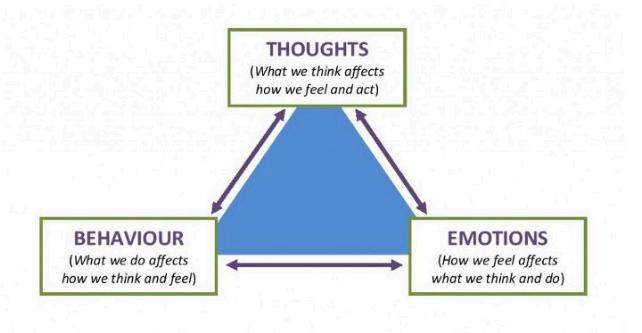
The cognitive triangle illustrates how thoughts, emotions, and behaviour are interconnected. Our thoughts affect our emotions, which inform our actions, and the cycle repeats. Only interventions can disrupt this pattern.
Michelle Obama once spoke at a North London school during the UK leg of her book tour, where she shared her experience of feeling like an outsider throughout her life. “I had to overcome the question ‘ am I good enough?” she said, discussing her experience at Princeton. “It’s dogged me for most of my life. Many women and young girls walk around with that question in their minds.”
More often than not, these thoughts of not being good enough, which could stem from a previous rejection or inherited shame, evoke feelings of fear or judgement, which fuels imposter syndrome.
These feelings spiral into actions such as a racing heart, tightness in the chest, muscle tension, and overwhelming fatigue, and (I will personally testify) nausea. When we question ourselves, we unknowingly send negative signals to our brains, resulting in us making terrible decisions or taking actions that we ordinarily wouldn’t consider. Hence, it was essential for me at that time to take charge of my thoughts, which, in turn, ultimately controlled my feelings and my behaviour.
Fortunately, I had picked up affirmations early on; they were my battle weapons for days when I felt insufficient. I donned my armour and stepped out on that stage, staring fear and failure in the face, embracing its familiar scent, and revelling in the breath of the worst results. Unsurprisingly, I made it.
A resounding ovation and positive reviews welcomed my words; one of the revered thought leaders in my field walked up to me and shared that he had quoted me in a post he just made on social media. I was elated! As he walked away, I felt the same old feeling creep in. I faltered and managed to hold my head high. I feared this fraud would now be found out again.
Nonetheless, if there was something I had learned, it was choosing to be kind to myself, even when I was my most prominent critic. It was a tussle of the fittest, as I was also my biggest fan. The fan won this time. I took in all the praise, basked in the overflow of positivity, and gave myself the grace to stay on it, living in that moment, taking up space, and finding my place right there at the top. Yet, I probably wouldn’t have done this if I had not placed that call with my friend.
Finally, we must be willing to be vulnerable. This is not a weakness but a strength. Opening ourselves up to be seen unashamedly for who we indeed are, being authentic and unapologetic. What is the worst that could happen? Do we fail? Embarrass ourselves? We fall? Well, then we pick ourselves up and try again! Failure will always be familiar. When Zig Ziglar shared that 'F-E-A-R’ has two meanings, I felt that. “Forget Everything and Run' or 'Face Everything and Rise”. The choice is yours!
This is why we all need support on our journeys— a tribe committed to seeing us soar while anchoring our darkest days.
References: https://www.psychologytoday.com/us/basics/imposter-syndrome https://www.stylist.co.uk/entertainment/celebrity/imposter-syndrome-quotescelebrities/307473
https://kasa-solutions com/what-is-the-cognitive-triangle-and-how-is-it-used/
Adekunbi is a Visionary Fellow of the Vital Voices Visionary Program in Partnership with Estée Lauder Emerging Leaders Fund, a Global Youth Ambassador at Theirworld, an experienced public speaker and facilitator, and the Chief Operating Officer and co-founder of The Nutrition Network Africa. She works with a group of innovative women leveraging technology to revolutionise the management of chronic illnesses in Africa.

https://www linkedin com/in/adekunbibello/

By: Aoife O’ Brien
Have you ever had the feeling that you weren’t up to the job, that you got to where you are by pure luck, and that it’s only a matter of time before you get ‘found out’?
You’re suffering from imposter syndrome. Beyond just self-doubt, imposter syndrome is that feeling that we’re not good enough to be doing what we’re doing and we’ll soon be found out for the fraud that we are.
Imposter syndrome has become a bit of a “hot topic” and is receiving a lot of press recently. They say that 70% of individuals will experience imposter syndrome at some point in their career. It is perceived as something that impacts on women, (probably because the original research was done to understand why high achieving academic women were doubting their capabilities so much), but actually it impacts on both men and women, though we may deal with it in different ways.
I first heard the term “imposter syndrome” in the context of a promotion I had recently received at work.
I was explaining to my friend how they couldn’t find anyone else for the position, that I just happened to be in the right place at the right time, and I surely didn’t belong as part of the senior leadership team?
It was not until years later when I set up my business that I truly understood the meaning of the term. I was surrounded by all of these other “successful” women who knew how to run a business, and who was I to think I was one of them? I also reflected on other times imposter syndrome had shown up for melike that time I asked for more money than I thought I reserved (and got it!), it hung over me like a bad smell. I was convinced there must have been an admin error in my salary.
Imposter syndrome can hold us back in so many ways as women. Some of the key themes to come through from my research around the thoughts we have when we experience imposter syndrome. Respondents shared things like:
Constantly thinking “Other people are so much better than I am”
Always questioning our abilities
Putting off tasks or decision-making
Feeling like the odd one out, like we don’t belong
Feeling unworthy of success
Constantly worrying what other people think of us
Now, you might be thinking, yeah I get that there’s this thing called “imposter syndrome” but I really am an imposter - I am totally out of my depth and don’t know what I’m doing. Let me reassure you that this is your imposter speaking.
Imposter has a funny way of showing up, typically when we need to be more visible, take on a new role or responsibility or return to work after a period of absence (like maternity leave, caring duties, long-term illness, or like me, travel). It can stop us from going for promotions, make us quieten our voice and not speak up about things that are important to us, it can lead to over working in an effort to prove ourselves, and can sometimes be so drastic that it leads to burnout. I have some clients who left roles rather than being “exposed” as an imposter.
In her extensive research, Dr Valerie Young discovered 5 types of imposter:
Perfectionist (I shouldn’t make mistakes); Super Human (I should be able to do it all); Soloist (I should be able to do it alone); Natural Genius (this should come easily and naturally to me); and Expert (I need to have all the knowledge and expertise before starting).
Personally, I can relate to at least three of these types!
By this stage, you may recognise yourself in some (or all) of what I have shared, and are looking for some practical steps to address imposter syndrome. Over the last five years working with women in leadership positions, I have devised a framework for working through your imposter feelings. I made it easy to remember, so you have no excuses!
I call it the ABCD method.
A - is for Awareness. Simply becoming aware that it is in fact imposter syndrome goes a long way to addressing it. Speaking up about your experience of imposter syndrome helps you to connect with other people, especially since most have also experienced these imposter feelings.
B - is about building up belief. How can you build your belief in yourself, who you are, what you stand for and what you’re capable of. This can be done in various ways, including asking for positive and affirming feedback, getting clear on your values, strengths and unique contribution.
C - is for courageous action. We think we need to feel confident before taking action, but this is not the case. Confidence comes from getting small wins, not from thinking and planning. Identify the first small step that you can take, build you confidence by taking action, and know that anything you encounter along the way is a setback on the road to success and not a “failure”.
D - is for Do it Anyway. You may feel tired, unmotivated, unsure, unclear. Do it anyway! Clarity and confidence come from taking action, not from thinking.
Now that you know more about imposter syndrome, I challenge you to actually do something about itturn that information into action!
Take the quiz and fun quiz to find out what type of imposter you are: https://www.impostersyndrome.ie/quiz
Access my research report: https://www.impostersyndrome.ie/report
Listen to this podcast about imposter syndrome, and the cost to businesses.


https://happieratwork.ie/
https://www.linkedin.com/in/aoifemobrien/
Aoife O’Brien is the founder of Happier at Work (formerly Empowerment Coaching).
She has 20+ years of identifying and solving business problems for global organisations such as Unilever, Mars, CocaCola and Kraft-Heinz.
As a results-driven and curious professional with an aptitude for solving problems using data, she support HR and business leaders of medium-sized organisations to improve productivity, drive better engagement and reduce attrition.
By Sadie Raney, Co-Founder and CEO, EVE
I have witnessed firsthand the transformative power of technology and its potential to redefine wealth creation. As a founder deeply entrenched in the world of technology and digital assets for over a decade, I’ve seen the highs, the lows, and the gaps - especially involving women’s participation in this exciting field. It was this gap that launched EVE, a platform that’s more than just about numbers and charts; it’s about opening doors for women to play a significant role in the future of finance through digital asset investment.
The digital asset market has had a rapid evolution, and despite being the bestperforming asset class in eight of the last 10 years, digital assets saw only a fraction of women participate. With projections showing that women will control $30 trillion in investable assets by 2030, the need to expand into digital assets for a well rounded portfolio is clear. EVE was originally founded in 2020 as a femalefocused investment community, however it was forced to shut down after the series of events in 2022 that impacted the crypto markets.
Recognizing the potential, my cofounders and I acquired and relaunched EVE, building off of its original foundation and adding our extensive experience in robo-investing platform development and digital investment management.
Women often exhibit a more cautious approach to investment, preferring to fully grasp opportunities before engaging, which often means that women miss out on early opportunities in fast-paced markets like digital assets. When one has a better understanding of an investment, they make better long term financial decisions. That’s where EVE steps in. We are here to demystify the digital asset market, providing our members with the clarity and confidence needed to make informed, strategic investment choices.
Our strategy at EVE revolves around three core offerings:
Community: Recognizing the value of networks and communal support in investment decisions, we are dedicated to fostering a strong, supportive community. This community is not just about discussing investment strategies; it’s about building connections, sharing experiences, and growing together.
Education: We believe that empowering through knowledge is the first step towards financial freedom. We offer an array of educational resources that are approachable and user-friendly, breaking down complex concepts into understandable segments. Our goal is to equip our members with the tools they need to navigate the digital asset space confidently.
Guided Investments: Understanding the diverse financial goals and risk tolerances, we offer personalized investment solutions. We provide curated starter portfolios based on individual profiles, enabling our members to make investment decisions that best suit their financial objectives.
The digital asset market’s growth presents opportunities for wealth generation. Through EVE, our members are equipped and ready to capitalize on these opportunities, leveraging technology to enhance the accessibility and effectiveness of our platform.
We also place a strong emphasis on education. Our web and mobile apps are designed to be simple yet comprehensive, allowing users to start their crypto journey with a single click. From portfolio recommendations to growth tracking, our educational resources are tailored to enhance a user's understanding of digital assets and their potential role in a healthy investment portfolio.

We recognize that the evolution of new technologies has brought about a sea of jargon, complex concepts and an everchanging landscape that can present intricacies and confusion. We also believe that with the right guidance and resources, the complexities of crypto can be transformed from barriers and blocks into gateways for opportunity and growth.
As we continue to develop and expand EVE, our commitment to reshaping the narrative around women and digital asset investing remains steadfast: We built EVE because financial knowledge is freedom. Join us, and together, we can learn, invest, and redefine the next wave of wealth creation.


https://www.evewealth.com/
https://www linkedin com/in/sadieraney/
Sadie Raney is a leader in digital assets and an advocate for women’s wealth creation.
As CEO and CoFounder of Strix Leviathan & EVE Wealth as well as a cofounder of Makara (acquired by Betterment in 2022), Sadie believes digital assets are the key to financial empowerment. She is also a strategic advisor and mentor for businesses across innovation, technology and finance.

By Dr Kinga Mnich
In the quest to amplify women’s voices, Ziva Voices combines SEO and backlinks, transforming digital presence into powerful platforms for visibility and influence. Discover how these tools not only boost credibility but also foster a vibrant community of support among women in the digital realm. And let’s start the conversation on how the digital space can close the gender gap.
In the digital age, where information is abundant, and attention spans are fleeting, standing out from the crowd is essential. For women, particularly, carving a niche and amplifying their voices is crucial. This is where SEO (Search Engine Optimization) and the strategic use of backlinks come into play, providing a powerful tool to boost visibility, credibility, and ultimately, influence.
At Ziva Voices, we understand the significance of women supporting women and its impact on individual brands and collective amplification.
Our approach goes beyond traditional publishing; we strive to create a dynamic ecosystem where every contributor is featured and actively promoted through robust SEO strategies.
But first, let's demystify SEO and backlinks.
SEO encompasses a range of techniques to optimize a website's visibility on search engines like Google. It involves everything from keyword research and content creation to technical optimizations and link building. Backlinks, in particular, play a pivotal role in this process.
Backlinks are essentially links from one website to another. When a reputable website links to yours, search engines perceive your site as more credible and authoritative, thus boosting its ranking in search results. This is because backlinks serve as a vote of confidence from other websites, signaling to search engines that your content is valuable and worthy of recommendation.
Why do many companies and individual brands pay for backlinks?
The answer lies in the competitive landscape of the digital realm. With millions of websites vying for attention, more than great content is required. Without proper promotion and visibility, even the most compelling narratives can get lost in the expanse of the internet.
Paid backlinks offer a shortcut, allowing brands to establish credibility and quickly improve their search rankings. However, not all backlinks are created equal. Quality matters just as much as quantity. A few high-quality backlinks from authoritative sources can have a more significant impact than numerous lowquality ones.
At Ziva Voices, we prioritize organic and authentic connections. We focus on fostering genuine relationships within our network of contributors, partners, and supporters. We believe in the power of women supporting women, both online and offline. We don’t charge or pay for backlinks.
In addition, we recognize the importance of backlinks in the world of AI (Artificial intelligence), as they play a significant role in the realm of AI, particularly in the context of machine learning models and natural language processing (NLP) systems. While the direct application of backlinks in AI may not be as evident as in traditional SEO, their influence is still significant in a different manner.
But how do backlinks intersect with AI?
In the space of AI, backlinks indirectly contribute to various aspects of development and deployment. AI models rely on vast datasets for training, and the quality of this data is paramount. Backlinks serve as indicators of credibility and relevance, guiding AI systems to prioritize information from reputable sources.
Additionally, they facilitate semantic understanding and knowledge graph construction, enabling AI to comprehend complex relationships and enhance content recommendation.
At
Ziva Voices, we harness the power of AI to amplify women's voices further. From improving content recommendations to combating spam, AI algorithms leverage signals from backlinks to ensure the integrity and relevance of our
platform.
In essence, our approach to SEO, backlinking, and AI is rooted in the principles of unity and solidarity. By leveraging these technologies, we provide a platform where every woman's voice can be heard and amplified, making a meaningful impact in the digital world and beyond.
That's why we go the extra mile to ensure that every contributor not only gets featured in our bookazine but also receives personalized attention in the form of individual profiles. These profiles serve as digital portfolios, showcasing their expertise, accomplishments, and unique voices to a global audience.

Moreover, we actively encourage collaboration and reciprocity within the Ziva Voices community. By forming partnerships and exchanging backlinks, our contributors amplify each other's voices and expand their reach far beyond what any single platform could achieve.
So whether you're a seasoned professional or a budding entrepreneur, whether you're looking to share your story or expand your audience, Ziva Voices offers a platform where your voice matters. Join us in amplifying women's voices and reshaping the narrative, one backlink at a time.
Join us in reshaping the narrative and amplifying women's voices, one backlink at a time.
We believe that by elevating each other, we can collectively rise and make a meaningful impact in the world. Women supporting women isn't just a slogan; it's a philosophy that guides everything we do at Ziva Voices.



By Ade Larigo
From the beginning of my social work career, I have been keenly aware of the significant role and responsibility it entails, especially in safeguarding vulnerable children.
My time in the UK foster care system highlighted a critical matter that would ultimately shape my professional path: the urgent requirement for diversity among individuals who have the authority to approve families seeking to adopt or foster children within the care system. In the UK adoption and foster care system, these individuals are referred to as panel members.
In order to address the negative impact of limited diversity in the UK care system, a standardized approach was often used, which overlooked the unique cultural, ethnic, and heritage needs of children. To tackle this issue, I established an agency that is dedicated to revolutionizing the adoption and fostering process through the use of technology. Although small in size, this initiative is driven by ambition and aims to make a significant difference.
In 2016, I began a transformative journey without even realizing it. My goal was to make a positive impact on the lives of vulnerable children by joining a group of dedicated individuals who assist adoption and foster care agencies in approving families for these children. However, once I started my role, I noticed a significant lack of diversity among these panels. This lack of representation can lead to decisions that overlook the diverse backgrounds and heritage of both the children and the adoptive/foster families. To tackle this issue, I have created an organization that aims to achieve equal representation, with a particular focus on underrepresented black children. Our organization is introducing a job board platform that will revolutionize panel recruitment by prioritizing inclusivity and streamlining the process.
Our goal is to make it easier for more people to learn about these panel roles and mentor them to accurately reflect the diversity of the children they serve. We aim to assist adoption and foster care agencies in the UK in moving away from traditional recruitment methods that may be biased.
My agency's main goal is to empower panels by embracing diversity and technology. By bringing together a more inclusive group of individuals to assess families for children, we aim to guarantee that each child's distinct requirements are not only acknowledged but also fulfilled. This approach will result in a more considerate and effective process of matching children with suitable families. It is essential to ensure that the perspectives of all children, particularly those from marginalized backgrounds, are listened to and appreciated.
Our aim in improving our job board is to set new standards for how adoption and fostering agencies find panel members. We are working towards a more transparent, accessible, and efficient process that will attract a wider range of candidates and bring diverse perspectives and experiences to the panels.
This significant change will not only benefit the children and families involved in adoption and fostering but also contribute to a larger movement towards inclusivity and fairness in society.
A small agency has the potential to ignite change
Agency Connection is an excellent illustration of how small businesses can have a big impact on promoting widespread change. Our main goal is to address the challenges related to diversity in adoption and foster care, with the ultimate aim of ensuring that every child in the UK's care system can be placed in a loving home that fully embraces their individual identity and nurtures their growth and cultural background. Inspired by personal experiences and driven by our shared commitment to making a difference, we are firmly committed to creating a more inclusive and compassionate world for vulnerable children.
Our commitment to making a difference gained momentum with the support of likeminded organizations. Charitable grants from organizations like Hatch Enterprise UK, and my participation in the UK's first LinkedIn accelerator program allowed us to use social media to increase the reach of our mission.
This not only improved our agency's visibility but also gave us opportunities to shape national adoption policy and practice. Engagements such as speaking at events and consulting with the House of Lords on improving adoption legislation and the system for underrepresented communities have been important milestones in our journey.
Endorsements from clients and colleagues have greatly enriched my journey. A single referral led to a significant project that expanded my professional network and deepened my understanding of adoption and fostering.
Active engagement on platforms like LinkedIn and Instagram has opened doors to new territories, including podcasts, global summits, and various honors. This visibility has shown the value of connecting with diverse experiences and opportunities beyond one's immediate professional circle.
Connecting with extraordinary individuals worldwide has brought invaluable insights and expertise to our work and community. These interactions highlight the potential for growth through strategic networking.
Fostering collaborations within my network has led to fulfilling and impactful partnerships. These collaborations demonstrate the strength and success that comes from uniting individuals towards a common goal.
Speaking at the House of Lords was a surreal experience for me. It provided an opportunity to advocate for changes in the English adoption system, which we were able to achieve through our visibility on LinkedIn. This opportunity served as a powerful reminder of how social media can be used to make a positive impact in areas that matter to us.
To learn more about our mission and support this vital cause, please visit our website at www.agencyconnection.co.uk and follow our journey on social media.
By Joanna Sherrow

Navigating the pathways of technology with a focus on Software as a Service (SaaS), I've taken on a journey that blends my design, automation, and workflow experience into a platform that helps business owners streamline their sales and marketing efforts. Allow me to introduce myself: I'm Joanna Sherrow, the proud owner of EmpowrSoft a SavvyChic Design, LLC company that offers a comprehensive system and software solution and provides website and marketing services.
When I was young, I dreamt of becoming a news anchor, delivering stories that would captivate audiences on TV. However, fate had different plans in store for me; I found myself drawn into the world of sales and marketing.


Little did I know that this detour would equip me with invaluable skills and insights, laying the foundation for the entrepreneurial journey that awaited me.
Originally from the Philippines, 2015 marked a significant turning point as I bid farewell to my homeland, I remember only having two hefty suitcases and a carry-on, all in the name of love. Relocating to the United States was a bold decision fueled by passion, propelling me across continents to unite with my beloved.
As I settled into my new environment, I found myself getting a job that, while practical, left me looking for deeper fulfillment. I keep telling myself I know I am destined to do more, but what was it? It was during this time that I began to perceive technology not merely as a toy but as a powerful tool for shaping the future. I mean, I wasted a lot of time scrolling through Facebook and watching cat videos at one point (no offense). My journey led me into the digital world, where I started to learn about personal branding, website design, and marketing strategies, harnessing technology to make a lasting impact.
My journey has been characterized not by a well-lit highway but by a winding trail of self-awareness driven by observation, action, and an insatiable thirst for knowledge.
While I may have yet to gain complete expertise in coding or possess the technical expertise to craft intricate algorithms, my strength lies in envisioning how technology can enrich lives and businesses.
I recognize the potential it holds and am eager to explore how it can elevate both my endeavors as a business owner and those of others. I knew I needed to create sustainability in the business and help others create the same. I always have this mantra "Everything is figureoutable," I was determined to explore something outside my knowledge and comfort zone. Sometimes I laugh at myself and wonder what I am getting myself into.
Technology has been and is still a trusted ally in my mission to empower small businesses. Witnessing firsthand how the right technological tools could amplify creativity and drive business growth, I remained committed to leveraging technology to help others. However, as I go deeper into this, I couldn't help but notice the glaring gender gap, with few women venturing into technology.
Yet, amidst this landscape, one woman stood out and served as my inspiration: Melanie Perkins, the visionary founder of CANVA. Her journey serves as an example of how the transformative power of technology can democratize design and make it accessible to all. Canva has changed my life as it opened my eyes to my creative side.
Inspired by Perkins' trailblazing spirit, I started looking for a solution to some entrepreneurial challenges. The challenge of having too many tech stacks just to get things going in our business. Why not streamline and minimize the cost we all spend? So through extensive exploration of various software and platforms, I sought the perfect combination to enhance business operations and drive growth, got the license for EmpowrSoft, and launched the platform.
Armed with nearly twenty tech stacks under subscription to streamline my operations, I seek a solution that could empower businesses far beyond my own.
Through meticulous research and unwavering determination, I launched software tailored to meet the unique needs of small business owners. Despite grappling with technical intricacies, I remained steadfast in my pursuit of realizing my vision.
My story is a testament to the importance of embracing technology as an integral part of the entrepreneurial journey. As a woman in a predominantly male-dominated industry, I embrace the challenge of representing a minority voice in the world of software. My path lies in the courage to act upon fleeting thoughts, trust intuition, and tirelessly pursue a vision. In fully embracing technology, I stand not as a solitary figure but as someone guided by the expertise and shared vision of those who strive for a brighter tomorrow. Recognizing
Joanna Sherrow w born and raised in Philippines before moving to the US 2015. Upon settling into her new home discovered a pass for innovation and creativity, particul in personal branding website, and graphic design.

Motivated by her Filipino heritage, Joanna persevered through challenges, continuously pushing forward to achieve her goals.
https://empowrsoft com/ https://www.linkedin.com/in/joanna-sherrow/
By Cigdem Oztabak
Recently, the recognition of the importance of elevating female careers within the tech sector has progressively intensified. Despite advancements, a noticeable disparity persists as women remain scantily represented in technical positions. Obstacles such as insufficient mentorship, restricted networking prospects, and ineffective marketing are frequently highlighted as principal hindrances to their professional progression. Let’s dive into how mentorship, networking, and marketing might bolster women in technology and enhance their vocational outlooks.
By tackling the distinct hurdles that women encounter within this sphere, nurturing impactful bonds via mentorship and networks, and leveraging tactical marketing methodologies, we can foster an environment that's both more accepting and encouraging for women aiming to prosper within technology realms.




In the realm of technology, mentorship is critically influential in boosting the career trajectories of women. Receiving guidance from a mentor provides essential advice, backing, and the opportunity for occupational advancement. Women encounter distinctive hurdles in fields dominated by men (such as tech), thus having a mentor becomes key to overcoming these challenges. For those women seeking progress in their tech vocations, being mentored paves pathways to fresh networks, enhances skills acquisition, and elevates leadership prospects.
Studies have shown that for STEM professions involving women, mentorship greatly affects job outcomes (CaterSteel, Aileen, Cater, Emily, 2010-05-31), leading to an upsurge in employment contentment, increased salary potential and expanded opportunities for professional elevation. Mentoring goes beyond merely serving as an instrument for vocational progression; it's critical for enabling women to overcome obstacles efficiently, and to prosper within the technological workforce.

Opportunities for networking are crucial for the career progression and professional enhancement of women in the technology sector. Such environments enable these women to forge connections with individuals who share similar interests, broaden their understanding via mentorship programs, and unearth possibilities for advancing their careers. Research has underscored the substantial influence that networking wields on the occupational advancement and gratification of women entrenched in sectors predominantly occupied by men, such as tech (Ghazal Kalhor, Hannah Gardner, Ingmar Weber, R. Kashyap, 2023).
Through participation in events centered around networking, attending conferences, and becoming part of digital forums, tech-savvy women can create a robust network of support, acquire essential knowledge, and heighten their profile across the industry. These platforms offer a stage for females to display their competencies, achievements, and proficiencies, enhancing their prospects in a fiercely competitive technological domain.

Such deliberate promotion activities have the potential to reformulate preconceived notions about women's involvement in technological fields, enabling them to secure more visibility and empowerment throughout the industry (Douglas M. Branson, 2020-11-03).
Marketing plays a critical role in amplifying women’s participation in careers in tech. It acts as a beacon, highlighting tech-savvy women's accomplishments, skills, and input while challenging prevailing clichés. Byadeptlyusingpromotional avenuesrangingfromdigital campaignstospeakingengagements atconferencestofeaturesinsectorspecificmagazines,awider demographicisengaged,motivating femaleaspirantsintothisarena.

Strategic measures are essential to dismantle hurdles and foster gender diversity within women's technology careers, pushing for equality and inclusion.
The pillars for elevating women's careers within technology encompass mentorship, connectivity, and promotional efforts. Implementing such tactics will enable the technological sector to nurture an atmosphere rich in diversity where women are empowered to reach their potential (Remi Kuti, 2023-07-13).


References:
Cater-Steel, Aileen, Cater, Emily, "Women in Engineering, Science and Technology: Education and Career Challenges" IGI Global, 2010-05-31
Ghazal Kalhor, Hannah Gardner, Ingmar Weber, R. Kashyap, "Gender Gaps in Online Social Connectivity, Promotion and Relocation Reports on LinkedIn", 2023
Douglas M Branson, "The Future of Tech Is Female" NYU Press, 2020-11-03
Remi Kuti, "Breaking Barriers Empowering Women In the Workplace" Independently Published, 2023-07-13
Cigdem Oztabak is a skilled marketer, writer, and moderator specializing in marketing communications for technology firms. She crafts compelling marketing content that explores emerging technology trends and business insights.
https://www pirix co/ https://www.linkedin.com/in/cigdemoztabak/
We've added some podcasts that we enjoy, inlcuding women’s podcast all over the world.
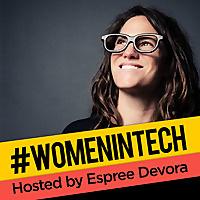
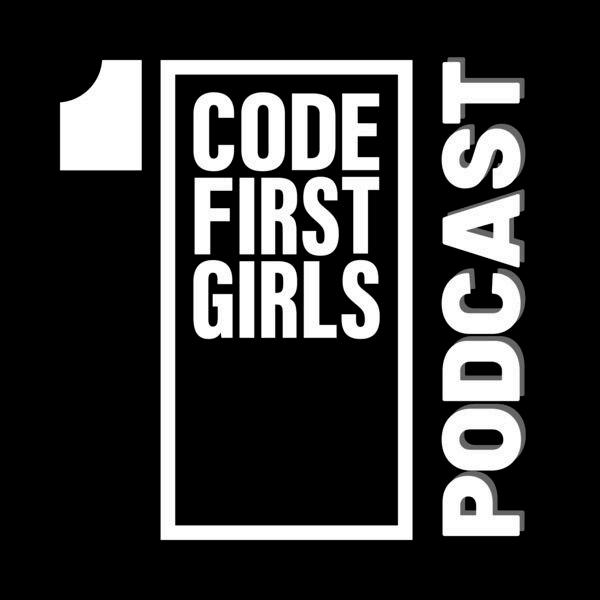







P A R T T W O
Honoring Women’s History Month in Lexington, Kentucky


Women Supporting Women’ isn't just a hashtag - for us, it’s a movement. In fact, it’s action or it’s nothing at all.
For us, celebrating women, and particularly during Women’s International Month, is a call to action. This year we presented the first-ever “Women Supporting Women” award at our International Women’s Day speakers’ event on March 8th in Lexington, Kentucky.
What is the “Women Supporting Women” award?
WRITTEN BY ELLA LUCAS-AVERETT
Ziva Voices recognizes the remarkable women making a difference in the world. We invited everyone in our community to nominate an inspiring woman who deserves recognition for her contributions to her community, her work, her art, her economy.
The winner received a $1000 award to support her business or creative endeavors that support other women. Our nonprofit is not confined by borders, and neither is this award. Nomination was open to any woman, anywhere in the world. And we hope that we can grow this each year and award more women across the world.
In addition to the $1000 prize, many of the nominees are being considered for a feature in the quarterly Ziva Voices magazine and/or showcased on the Ziva Voices website. After all, our mission is to amplify the stories of women and to connect women, and thus the impact of this award goes beyond the monetary value.

This year’s award went to Lillie Ruschell. Lillie is a multimedia artist and consultant. She serves on the Board of Directors for the Chrysalis House in Kentucky, which helps women and their children. She was instrumental in Lexington’s It’s Time campaign, raising awareness and increasing engagement around domestic violence. Lillie has invested countless hours telling the stories of women as a multi-media producer, and in improving the lives of women in her local community. We are proud to name her as our inaugural recipient of the Women Supporting Women Award!
Lillie Ruschell


"There
is nothing in the universe more powerful than a woman who has found and lives as her true self and nothing more meaningful than helping other women do the same."
This years event Women’s International Day speaker:

Adina Tatum is an accomplished Executive Director and consultant passionate about economic and community development.
With expertise in market development and sustainable communities, she has opened and nurtured businesses, introduced impactful initiatives, and addressed food insecurities. Adina’s consulting work focuses on removing barriers, fostering growth, and implementing educational programs for small business owners.
She celebrates community values, inclusivity, and diversity, actively contributing to impactful initiatives promoting socio-economic mixing and equity.
Lamar Zala Gran, an accomplished education and women’s rights activist from Afghanistan, has dedicated her efforts to empower women and children since 2020.

Nonprofit Organization, she advocates for Afghan women, raises awareness about their situation, and provides online education for young girls across the country.
Her commitment extends beyond borders, as she collaborates with global educators and leaders to improve the educational prospects and rights of Afghan women.

Kathryn C. Kaufman has built a career serving both the public and private sectors, with a focus on pursuing how governments can support private industry to spur economic growth and stability. She served as Managing Director at the Overseas Private Investment Corporation (OPIC).
She is responsible for founding and leading 2X, the agency’s multi-billion dollar Women’s Initiative.
Prior to joining NMV, Kathryn was a defense policy maker in the Office of the Secretary of Defense, serving as a country director for China and Taiwan on the Asia Pacific desk in the Secretary’s policy office.
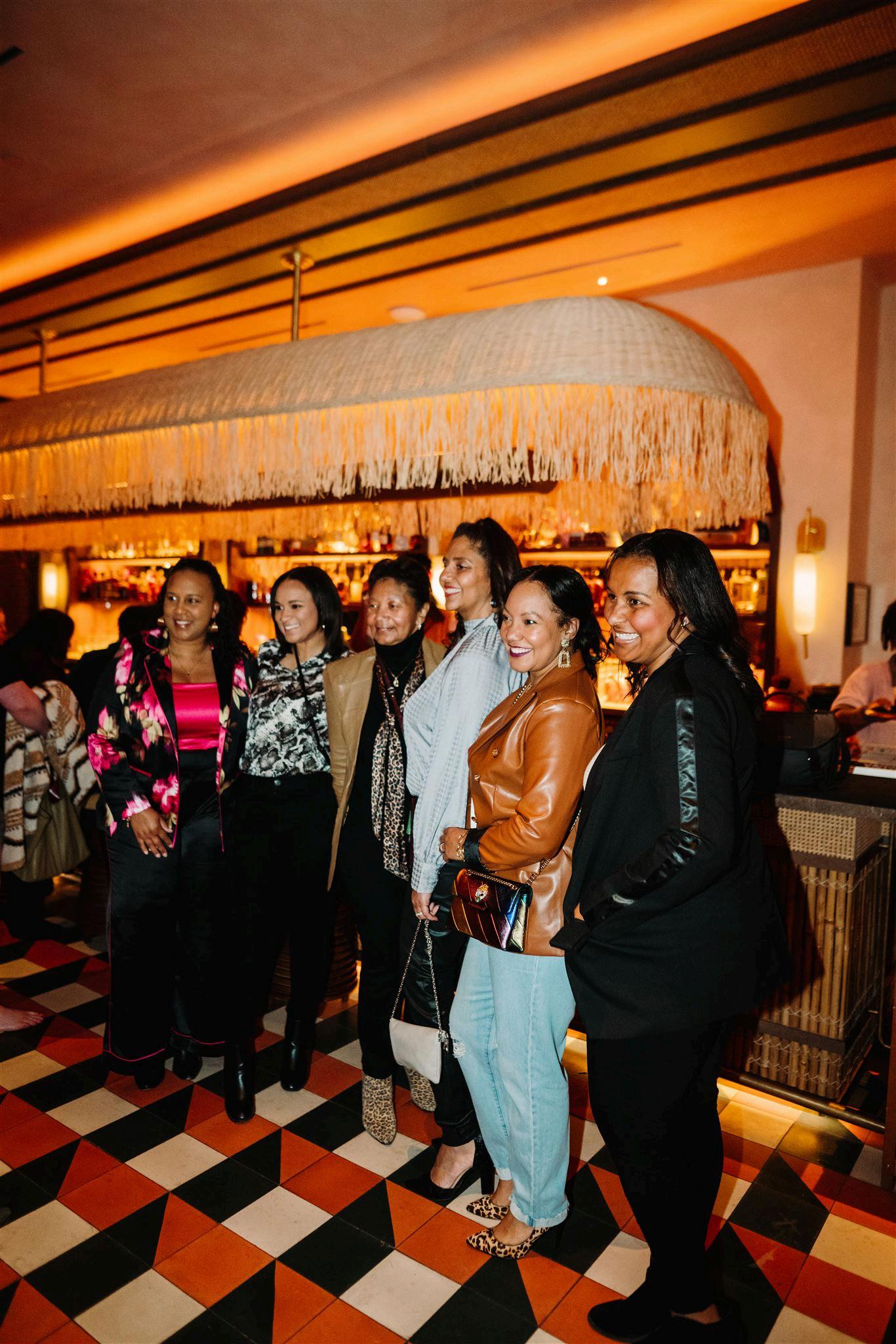

"The most effective way to do it is to do it."
Start by getting to know yourself better and understand your feelings. It gives you the ability to self-assess by understanding your strengths and weaknesses and their effects accurately. And it builds self-confidence, having trust in yourself and being willing to be yourself.
Emotional Self-Control is an essential part of emotional maturity. Guiding your feelings and/or appropriately expressing them is a crucial skill.
Being goal-oriented and being able to work toward your goals.
Initiative, being self-motivated and having the ability to keep working despite setbacks.
Empathy is one of the core pillars of emotional intelligence because it helps you to understand and acknowledge others’ emotions.
Organizational Awareness, meaning having the ability to explain yourself well and be aware of how you are being understood.
Creating space for others to process information and listening to others.
Inspirational Leadership: being a good mentor, role model, and inspirational figure. Influence in a positive & effective matter Improve relationships, negotiate, and lead. Have the ability to settle disputes, differences of opinion, and misunderstandings. Be A Change Catalyst!
Ziva Voices – HerStory in the Making is committed to collecting women’s stories, amplifying their voices, and providing a network to connect women worldwide. We exist to show how women influence their communities and benefit their economies through their work, to demonstrate the power of women working together, and to create a protective space to allow for growth.

I S S I O N
We foster self-empowerment through sharing resources, building confidence, and helping women develop a growth mindset.

MV I S I O N
Creating a world in which women’s contributions, creativity and voices are recognized and any opportunity barriers against them lifted.
We exist to show how women influence their communities and benefit their economies through their work, to demonstrate the power of women working together, and to create a protective space to allow for growth.
We foster self-empowerment through sharing resources, building confidence, and helping women develop a growth mindset.
We highlight how women change communities, benefit the economies in which they work, and lift each other up by fostering diversity and authentic equality.
The networking effect of this bookazine, our community and our workshops focuses on promoting women all over the world and providing them with highly effective and readily accessible support.

We organize regular in-person events for women to network, learn and get inspired. Community Events
Online magazine, Quarterly Bookazine, Online & In-person Events, Workshops, Corporate Trainings, and Podcast (coming soon!) Connection & Inspiration
Ziva Voices - HerStory in the Making bookazine
Online quarterly publication with a focus on women’s stories, amplifying their voices, and providing a network to connect women worldwide.

Creating a world in which women’s contributions, creativity and voices receive equal opportunities & visibility.

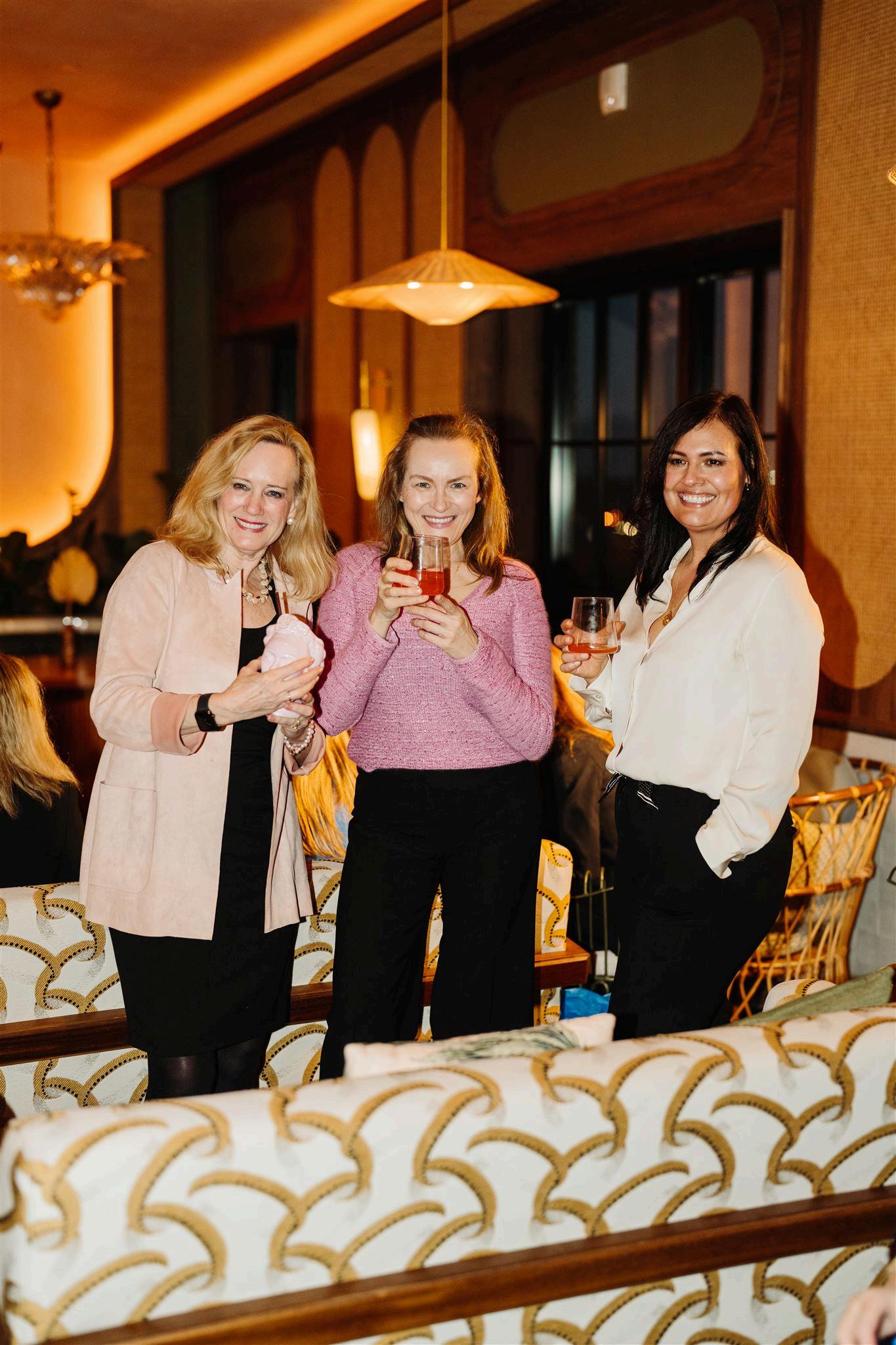
Dr Kinga Mnich
www kingamnich com
Brittany Strube
https://www.linkedin.com/in/brittany-strube/
Joanna Sherrow
https://www linkedin com/in/joanna-sherrow/
Gloria Kolb
https://www linkedin com/in/gloriakolb
Cigdem Oztabak
https://www.linkedin.com/in/cigdemoztabak/
Mimi Jerkan
https://www.linkedin.com/in/mimijerkan/
Lindsey Williams
https://www.linkedin.com/in/lindseyawilliams/
Nyari Samushonga
https://www linkedin com/in/nyari-samushonga6965523/
Heather Nickerson
https://www linkedin com/in/heather-nickerson/
Stephanie Groot
https://www linkedin com/in/stephanie-groot
Adekunbi Bello
https://www.linkedin.com/in/adekunbibello/
Aoife O’Brien
https://www linkedin com/in/aoifemobrien/
Sadie Raney
https://www linkedin com/in/sadieraney/
Co-Editors in Chief Dr Kinga Mnich & Ella Lucas-Averett
Contributors Brittany Strube, Mimi Jerkan, Lindsey Williams, Heather Nickerson, Stephanie Groot, Gloria Kolb, Adekunbi Bello, Sadie Raney, Aoife O' Brien, Joanna Sherrow, Ntswaki Motaung, Nyari Samushonga and Cigdem Oztabak
Chief Photography Editor Dr Kinga Mnich
Photography Jennifer Chang and Canva
Associate Editor Carla Patricia Caguioa
EDITORIAL OFFICES
624 Andover Village Pl , Lexington, KY 40509
+1 864 814 8810
hello@zivavoices com
SUBSCRIPTIONS
hello@zivavoices.com
The
www.zivavoices.com
Feel free to reach out with suggestions, comments, questions and inquiries: hello@zivavoices.com
Instagram: @ZivaVoices @DrKingaMnich @onairwithella
LinkedIn: https://wwwlinkedincom/in/drkingamnich/ https://wwwlinkedincom/in/lucas-averett/
HerStoryintheMaking.
More women are building successful communities and businesses everyday They are shifting their mindset, using their leadership skills, mobilizing communities and turning a small business into an empire.
In the Ziva Voices, we bring forth stories of experience and inspiration to highlight ways in which you can learn how to shift your mindset, change your habits, learn new skills, build your confidence, and learn to speak up.
When we hear the stories of other womenovercoming the pain, social obstacles and self-doubt - it can become easier to understand that you have all it takes to make the next move, be the person that creates change, and feel connected and empowered.
